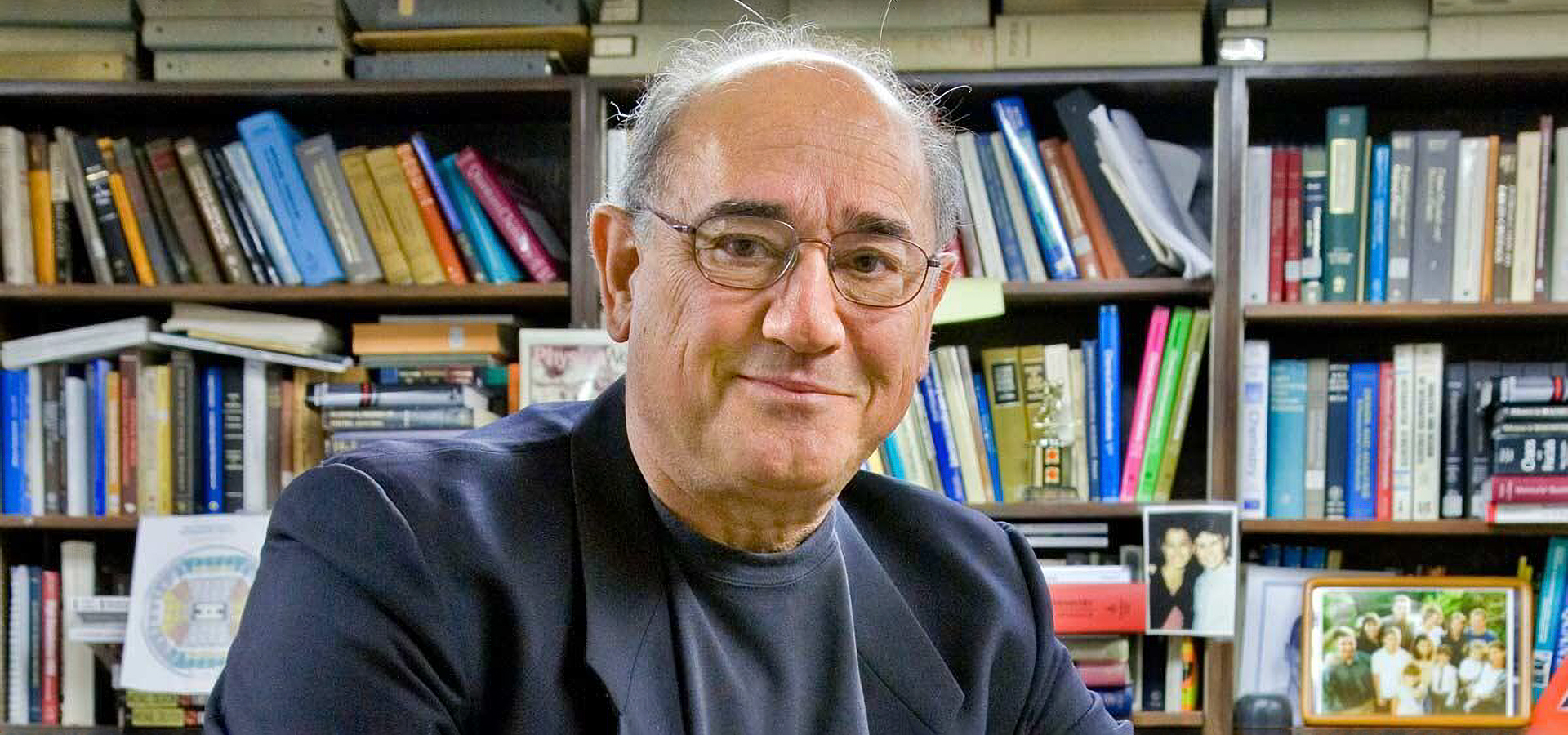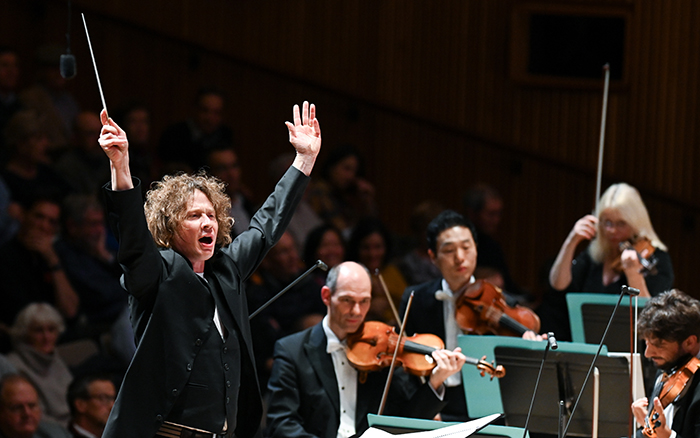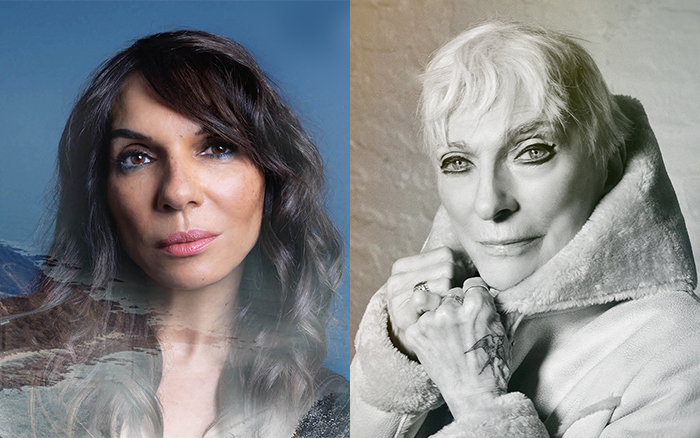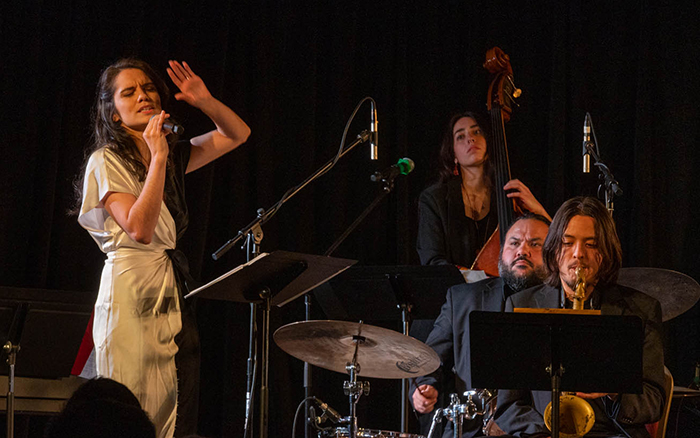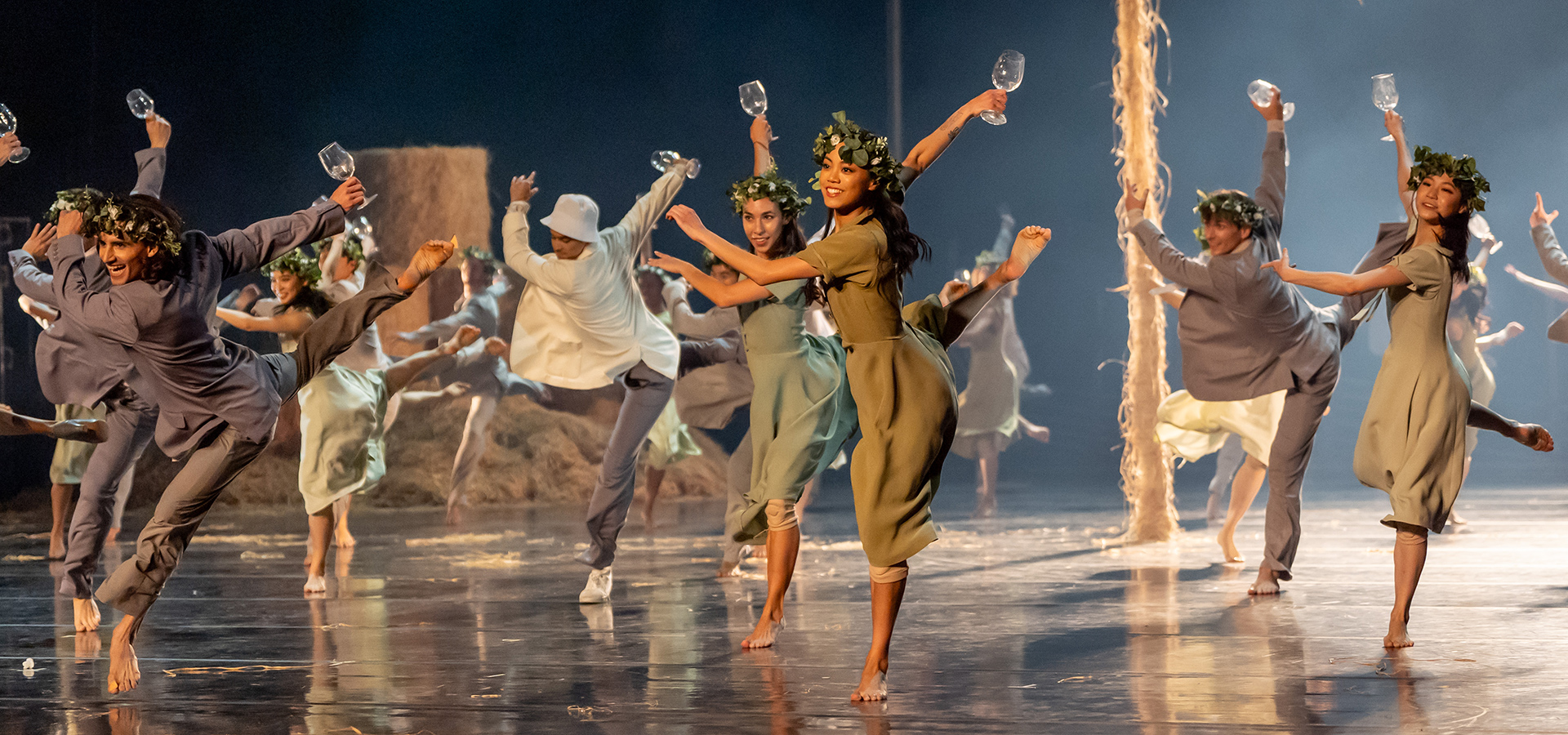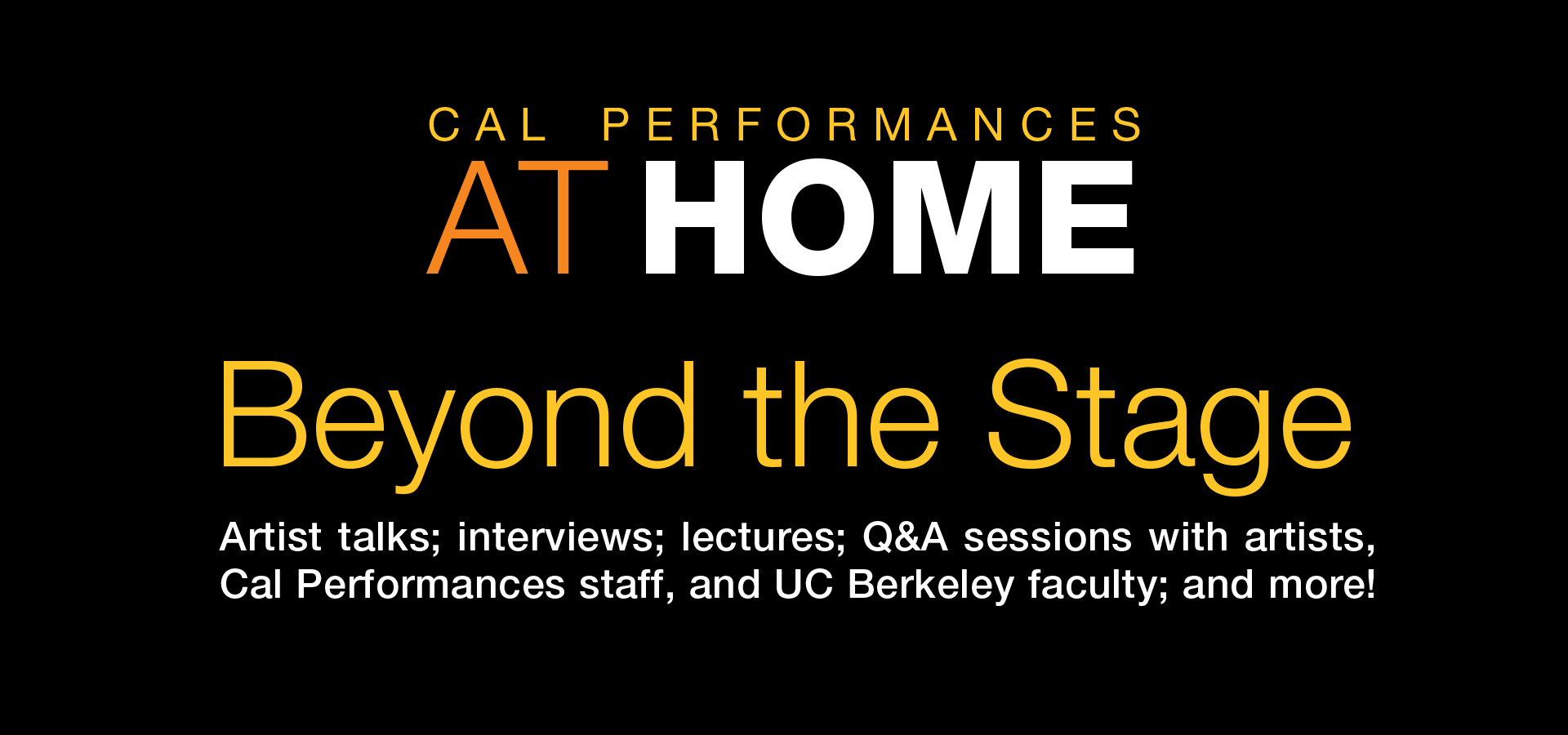
Cal Performances at Home is much more than a series of great streamed performances. Fascinating behind-the-scenes artist interviews. Informative and entertaining public forums. The Cal Performances Reading Room, featuring books with interesting connections to our Fall 2020 programs. For all this and much more, keep checking this page for frequent updates and to journey far, far Beyond the Stage!
Major support for Beyond the Stage is provided by Bank of America.
Beyond the Stage
5 Questions with Carol T. Christ and Jeff MacKie-Mason, Co-Chairs of Cal Performances’ Board of Trustees
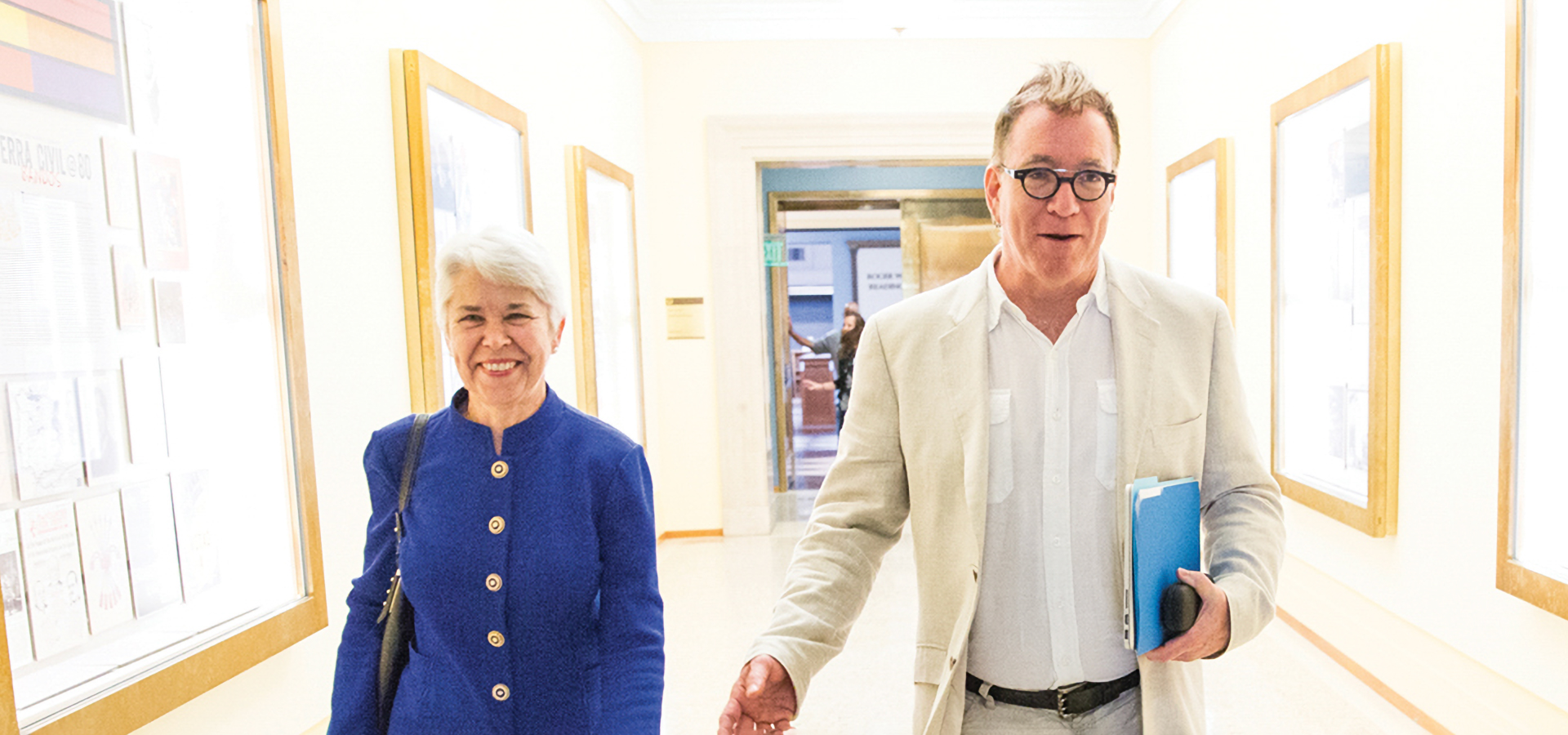
5 Questions with Carol T. Christ and Jeff MacKie-Mason, Co-Chairs of Cal Performances’ Board of Trustees
Internationally celebrated leaders Christ and MacKie-Mason share their personal memories and lifelong passion for the performing arts.
For the period of July 1, 2025–June 30, 2027, Cal Performances is honored to have Carol T. Christ join Jeff MacKie-Mason as Co-Chair of the Board of Trustees. Having served most recently as Chancellor and University Librarian on the UC Berkeley campus, respectively, their impact extends far beyond the City of Berkeley, or even the realm of academia. Regarded internationally for their leadership in higher education, information and technology, and cultural philanthropy, Christ and MacKie-Mason have also proven themselves unwavering advocates for the performing arts, having both been personally shaped throughout their lives by the power of live performance.
MacKie-Mason has been a member of the Cal Performances Board of Trustees since 2016, and has served as Co-Chair since 2021, helping the organization to navigate changes in leadership, shuttered venues and a return to live performances, and, most recently, the redefinition of Cal Performances’ mission, vision, values, and strategic initiatives. Christ joined the board in 2024 following her retirement from UC Berkeley, though she has attended Cal Performances events since the 1970s and was a critical support to the organization during her time as Chancellor, in which capacity she also approved the organization’s new strategic plan.
Cal Performances is thrilled to have these two celebrated leaders—each with such a rich personal history with Cal Performances and with the arts—in a position to guide the organization over the next two years. Though these two certainly need no introduction, we hope this Q&A will provide a more personal look into their relationship with live performance, as well as their vision for Cal Performances’ exciting next chapter.
What role have the performing arts played in your life (as observer or performer)?
Carol Christ (CC): I’ve played the piano since I was a child, and learned the viola as an adult. I also sang in vocal groups for many years. I’ve been attending performances of arts events of all kinds since college. And Cal Performances has had a profound impact on my family. My stepson Adam Sklute became entranced by the ballet by attending a performance of Swan Lake at Cal Performances when he was five years old. He subsequently had a career as a ballet dancer and is now the artistic director of Ballet West.
Jeff MacKie-Mason (JMM): Music has been vital for me since I was in about first grade. My mom was a good pianist, and inspired me from the start—and got me an excellent piano teacher. In high school, I played third chair cello sitting behind Carter Brey (longtime principal cellist in the NY Phil) and played a lot of 60s and 70s folk tunes on guitar. I drifted for a while, but came back to classical piano with a passion 25 years ago, and have taken lessons and practice daily since. Now that I’m retired, music has become my full-time occupation, including not just many hours at the piano, but classes at UC Berkeley to fill in gaps in my musical education.
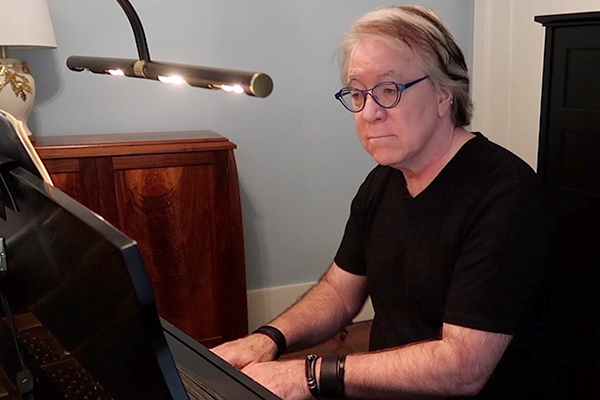
Jeff MacKie-Mason by UC Berkeley Libraries
How long have you been attending Cal Performances, and what made you want to serve as co-chair?
CC: I’ve been attending Cal Performances since I arrived in Berkeley in the 1970s. Serving as Co-Chair is a small way of saying thank you for the extraordinary performances I’ve attended over the decades.
JMM: I started attending Cal Performances as soon as we arrived to Berkeley in 2015, and joined the Board in 2016. When Jeremy Geffen [Executive and Artistic Director] asked me to become Co-Chair, I gratefully accepted the honor so that I could provide greater service to this magnificent organization—and also so I could work more closely with Jeremy, who is an incredible leader.
What is one (or a few, if you must!) of the most memorable performances you have seen in our halls, and what made it so special?
CC: There have been so many; I remember hearing Luciano Pavarotti sing at the Greek Theatre; I remember the Juilliard Quartet performing the whole cycle of Beethoven’s string quartets. But perhaps my most outstanding memory was a remarkable recital by a young, relatively unknown soprano, Jessye Norman. There were so few people in attendance that the recital was moved from Zellerbach Hall to Hertz Hall, where we heard one of the great voices of the century.
JMM: I was deeply moved by Víkingur Ólafsson’s performance of Bach’s Goldberg Variations. That’s one of my absolute favorite pieces in the literature, so I’ve listened to a lot of live and recorded performances (and it’s on my bucket list to learn). Víkingur brought a clarity and emotional intelligence that I’d never heard before: it has inspired me anew when I play Bach. Though recorded, I was also transported by Mitsuko Ucihda’s Schubert Impromptus, and by Jeremy Denk’s playing Bach’s The Well-Tempered Clavier during our online COVID season. And too many others for a short answer!
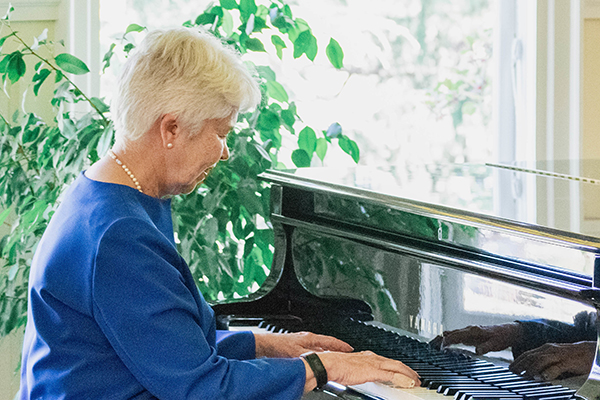
Carol Christ
Having served in a key leadership role on the UC Berkeley campus, what do you feel is the importance and opportunity of Cal Performances being part of the university?
CC: Art provides a kind of insight into human experience unlike any other; it is perhaps the most moving and profound form of human knowledge and achievement. And art builds community. I learned to love the performing arts in college; we are giving students that opportunity.
JMM: UC Berkeley is one of the very best liberal arts, comprehensive, research universities in the world. We graduate about 15,000 students a year, who go on to make a meaningful difference throughout the world. Crucial to our educational prowess is precisely that we are a comprehensive, liberal arts institution: our students are exposed to great thinkers, creators, and performers across the whole range of sciences, humanities, and arts. Cal Performances plays a critical role for them during these formative years. Berkeley just wouldn’t be the same without it!
What are you most excited about for Cal Performances’ future?
CC: Under Jeremy Geffen’s leadership, the quality of the seasons has been extraordinary. I look forward to even more great performances.
JMM: Over the past two years, we have developed and launched a strong and very concrete strategic plan. With it, we’ve charted a course forward that will result in Cal Performances not only surviving these difficult times for the performing arts, but becoming stronger. We’ll see innovative programming, increased engagement with campus and K–12 students, support for emerging artists… I’m very excited to be part of this ambitious, and—forgive the over-used word, but—truly transformative forward-looking project.
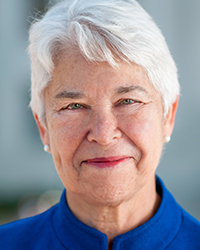
Christ also chairs the boards of the Central European University and the Simons Laufer Mathematical Sciences Institute (SLMath) and serves on the boards of the Marlboro Music School and Festival, the Left Coast Chamber Ensemble, and Rutgers University.
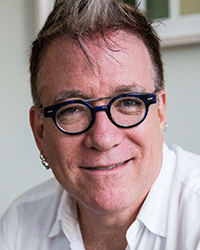
MacKie-Mason is a concert pianist with a life-long love of the arts, and has served on the boards of the University Musical Society at the University of Michigan and the Kerrytown Concert House. In addition to his leadership of Cal Performances’ Board of Trustees he also currently serves on the board of Authors Alliance, which advances the interests of authors choosing to share their creations broadly in order to serve the public good.
Related Posts
Jeremy Geffen Introduces the 2025–26 Season
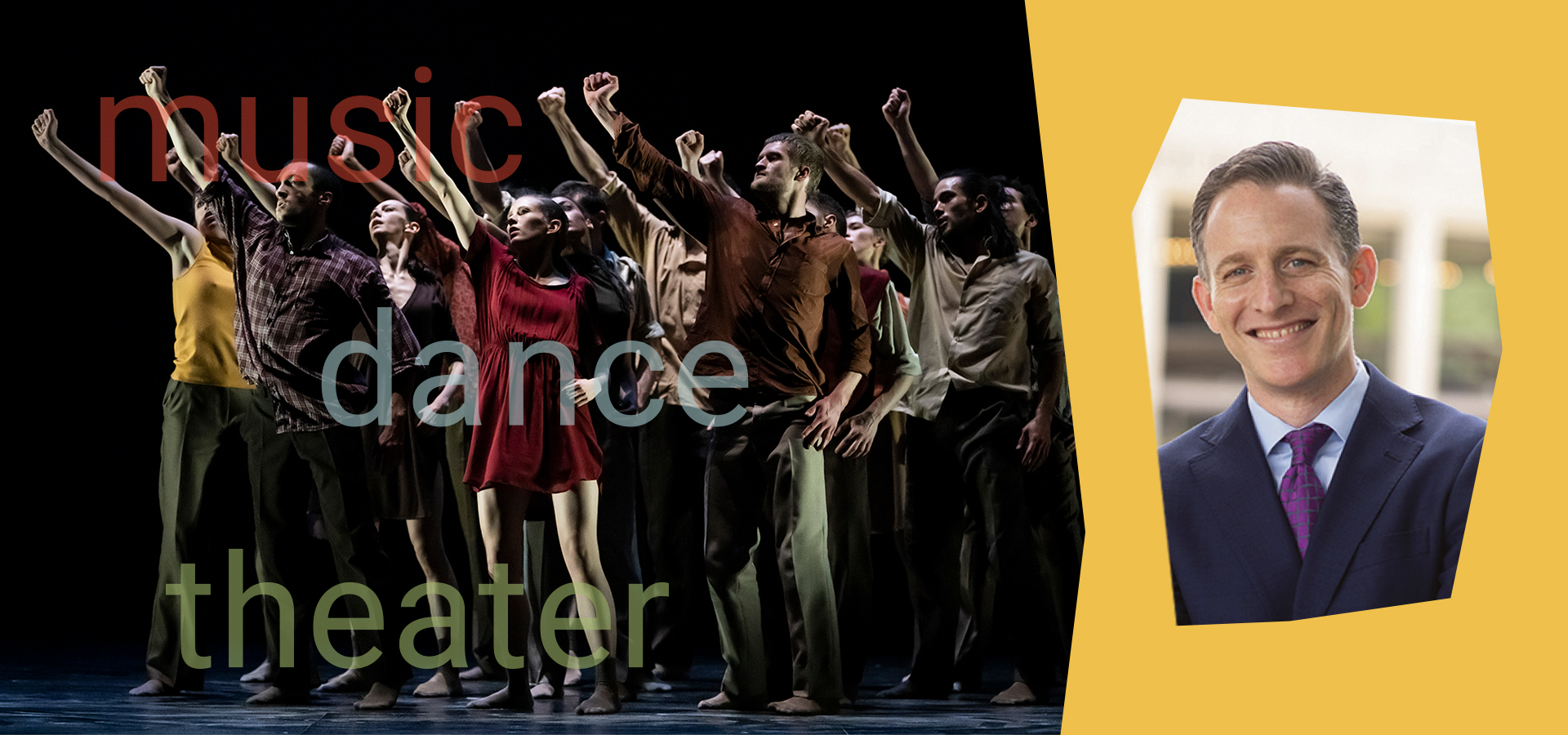
Jeremy Geffen Introduces the 2025–26 Season
A Letter from Executive and Artistic Director, Jeremy Geffen
By Jeremy Geffen, Executive and Artistic Director of Cal Performances
Welcome to Cal Performances’ 2025–26 season, the Bay Area’s most wide-ranging selection of music, dance, and theater. This season, we’re thrilled to bring you more than 80 events featuring some of the world’s most acclaimed performers—a reflection of the adventurous spirit that Berkeley audiences are famous for.
Our ambitious Illuminations theme of “Exile & Sanctuary” focuses on how issues of displacement can inform bold new explorations of identity and community; how profound distillations of these complex movements can be found in the creative works that originate in their wakes; and how artistic expression can offer safe harbor during times of unrest or upheaval—an idea I hope will ring true for each performance you experience this season.
Of the seven distinct Illuminations programs in our new season, I’d like to draw particular attention to Sarabande Africaine, a thrilling collaboration between superstars Angélique Kidjo and Yo-Yo Ma that explores the intersections between African and European music traditions, to be performed at the Greek Theatre on our season’s opening weekend.
We also welcome the return of Víkingur Ólafsson as our 2025–26 Artist in Residence. This masterful and ever-insightful pianist appears this fall as soloist in two concerts with London’s extraordinary Philharmonia Orchestra under the baton of principal conductor Santtu-Matias Rouvali, and returns to our stage for a solo recital in the spring.
Our acclaimed dance series is distinguished by genre-defining artists and major new productions, including the renowned Paris Opera Ballet, making its Cal Performances debut in the North American premiere of a new work by boundary-breaking choreographer Hofesh Shechter; the legendary Martha Graham Dance Company celebrating its centennial; The Joffrey Ballet in an ecstatic and otherworldly celebration of the traditional Scandinavian summer solstice festival; and the long-awaited Cal Performances debut of A.I.M by Kyle Abraham.
All of this, and so much more! As you explore our season calendar, I hope you discover events that offer fresh perspectives, challenge and reward your spirit, and bring you joy. I look forward to seeing you in the audience!
Illuminations Performances Explore “Exile & Sanctuary”
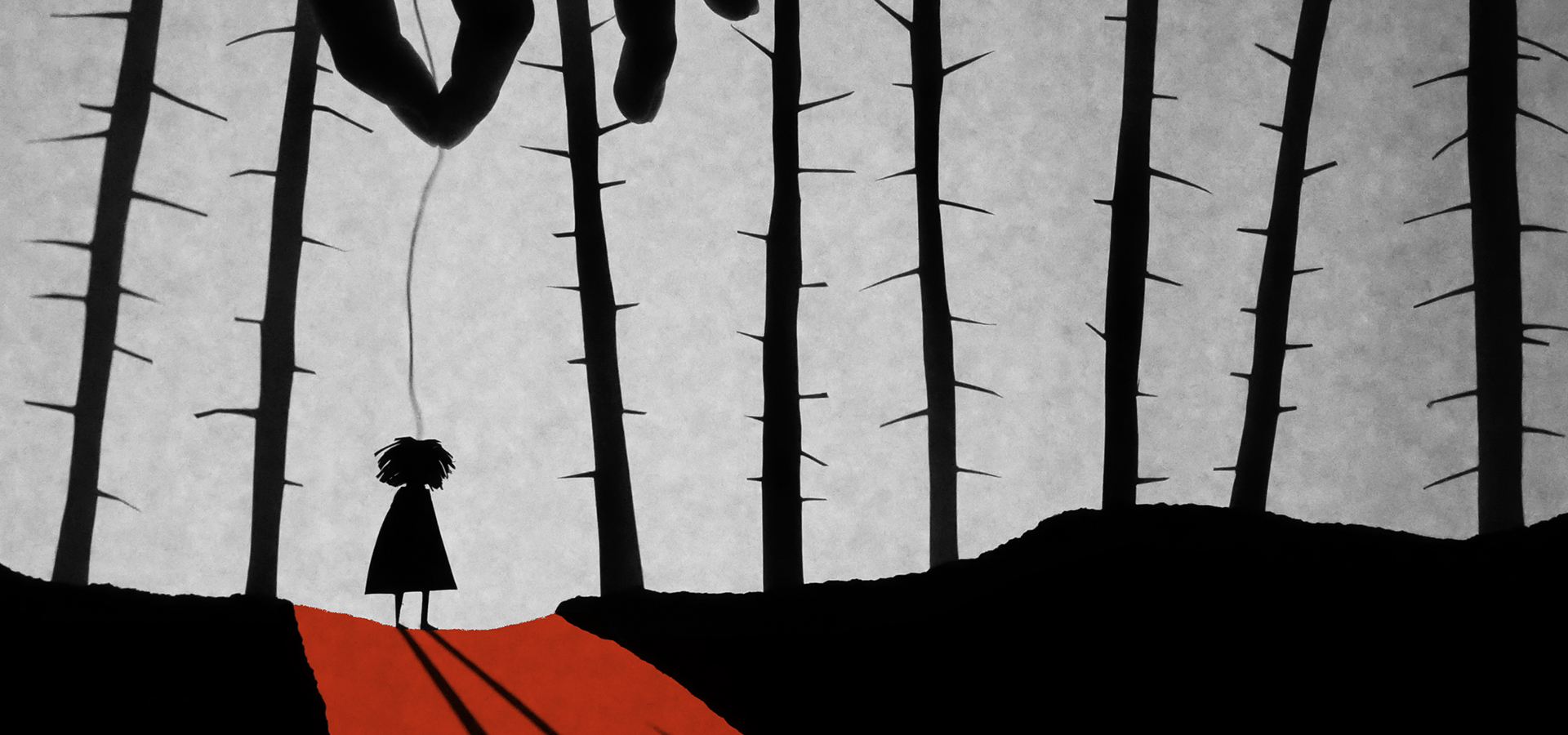
Illuminations Performances Explore “Exile & Sanctuary”
Seven music and theater programs each offer a distinct perspective on exile, sanctuary, and the arts’ role in creating spaces for resistance, healing, and reinvention.
Each year, Cal Performances’ Illuminations theme invites audiences to examine a pressing contemporary topic through the lens of both performance and current academic research at UC Berkeley. For the 2025–26 season, seven music and theater programs, coupled with related activities including Q&As, artist talks, and panel discussions, will take up the theme of “Exile & Sanctuary.” For our purposes, Exile is considered as something more than just physical displacement, but also a rupture in identity, a stripping away of the familiar, leaving the individual or community without a sense of belonging; Sanctuary, in turn, is not simply a refuge, but a creative space in which new connections can be forged.
Each of the performances outlined below provides a lens through which we can consider how people who have experienced exile have found voice and comfort in building new identities, and how the arts can communicate their important stories. Through both straight-forward narrative and abstract presentations, live performances on this season will create vital spaces for resistance, healing, and reinvention.
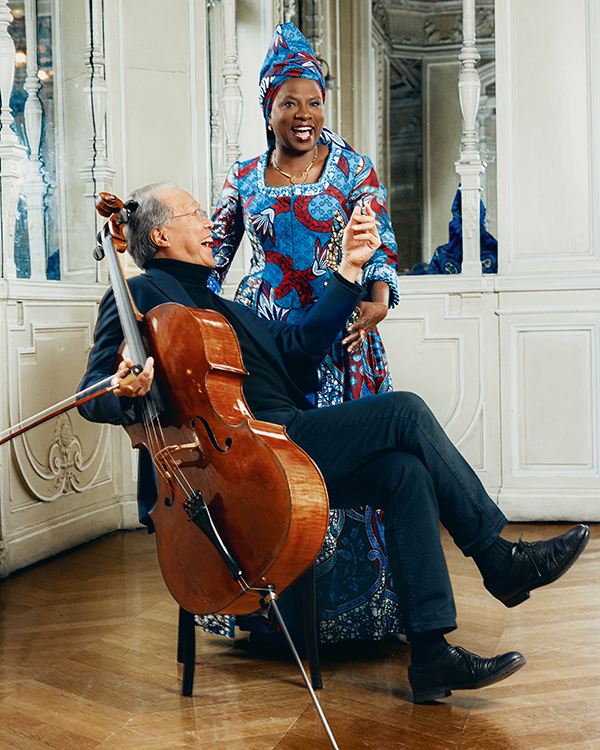
“Yo-Yo Ma and Angelique Kidjo, one associated with the world of classical music, the other with more diverse musical genres, from world music to jazz to pop to afrobeats. Both demonstrate a rare curiosity and inspiration” (kidjo.com). In August, Berkeley audiences have the rare opportunity to see these two superstars come together to bridge genre divides in an intricate musical program, Sarabande Africaine. Designed to “explore the times and places where classical and African music intersected,” the program acknowledges times in history when African people have been enslaved and their contributions overlooked, and yet their music was used to inspire those very cultures that instigated their systematic subjugation. Throughout the program, Western classical music is balanced by African American spirituals and many original songs by Kidjo herself, drawing out points of commonality as well as communion within various Black communities, despite a broader history of division.
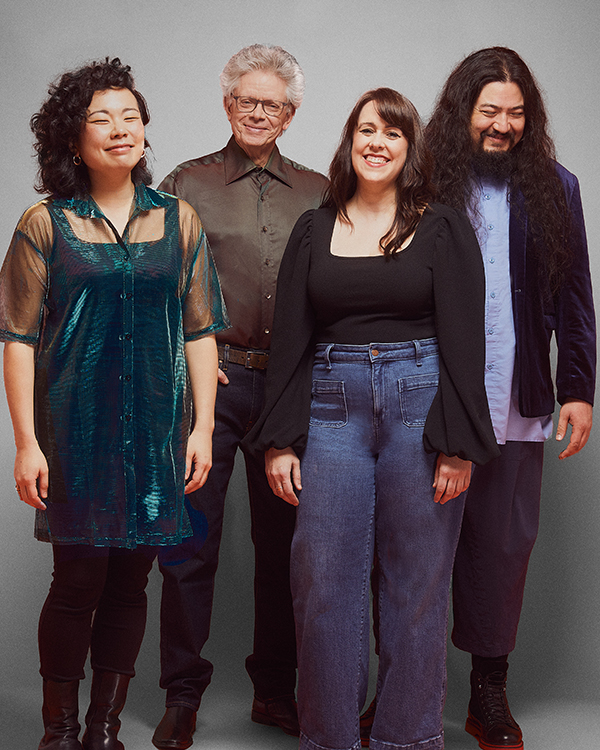
Since Kronos Quartet’s founding more than 50 years ago, the peerless string quartet has been deeply invested in using music to shed light on pressing social justice issues. This October, the San Francisco-based artists return to Cal Performances for a program that fuses music with multimedia and live conversation to highlight the impact of Chinese Americans on American culture, specifically by recognizing landmark civil rights cases that made it to the courts.
When asked about the genesis of this project, founder and artistic director David Harrington shared that the topic first presented itself when his daughter, who was teaching the third grade, brought home the children’s book I Am an American: The Wong Kim Ark Story. This book told of San Francisco-native Wong Kim Ark, whose 1898 Supreme Court case confirmed birthright citizenship for Chinese Americans, even during the time that the Chinese Exclusion Act was in effect in the US. This information prompted Harrington to conduct further research, which collectively emphasized how, for more than a century, Chinese Americans have deftly utilized the court system to challenge laws designed to keep them on the fringes of American society, and, in doing so, strengthened their communities and the role these communities play within US culture at large. The music, film, and unscripted conversation with Bay Area activist David Lei will work together to educate and elucidate concepts of exclusion versus inclusion, resilience, and community.

A troupe of otherworldly imagination, Manual Cinema is renowned for utilizing bold techniques—including shadow puppetry, actors in silhouette, immersive sound design, and live music—to bring engaging stories to life. In November, they will give the Bay Area premiere of a brand new production inspired by Shakespeare’s classic tragedy Macbeth. In the original play, we follow the Scottish General Macbeth who receives a prophecy from three witches that he will one day become King of Scotland; fueled by ambition, Macbeth kills the king in order to claim the throne, and allows his greed and paranoia to motivate further violence and tyranny at both an individual and state level.
Of Manual Cinema’s new production, The 4th Witch, Co-Artistic Director Drew Dir shared, “I started to wonder, oh, wouldn’t it be interesting to tell a story about someone who is impacted by Macbeth’s tyranny? And to follow their psychology and maybe how they lose themselves, and maybe it’s a way to mirror Macbeth’s own journey?” The subject of this exploration is a young girl who finds herself displaced and orphaned as a result of Macbeth’s military pursuits. Facing a sharp severance from her past and a deep loss of all that once defined her world, she embarks on a journey of self-discovery within the safe and welcoming community offered to her by three witches—who just so happen to be the very three who prophesied Macbeth’s rise (and, eventual fall). In the safety of her new adoptive family, she must learn how to make sense of her loss, and decide how she will allow her past struggles to define her future.
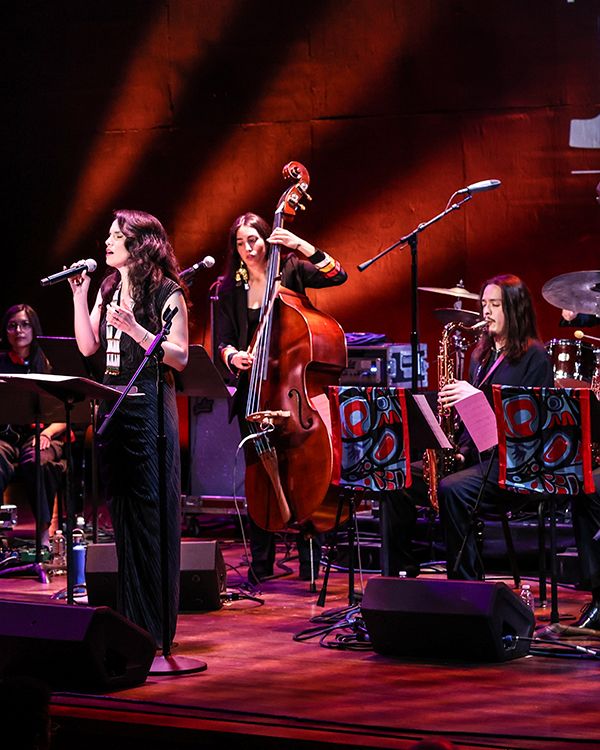
Julia Keefe Indigenous Big Band, which makes its Cal Performances debut next March, is dedicated to celebrating and extending the contributions of Indigenous musicians, composers, and bandleaders throughout the history of jazz in the US. Representing Indigenous and Native influence across many distinct tribes and traditions, the ensemble is particularly dedicated to the rich and complicated history that feeds into their current sound.
Throughout the 19th century and continuing into the 20th century, tens of thousands of Indigenous children were taken from their homes, often by government force or coercion, and placed with white families or, commonly, at white-operated, often government- or church-funded boarding schools. The purpose of removing Native children was to force their assimilation into what the government deemed true “American” culture. These children were given new clothes, new haircuts, and were generally forbidden from speaking their original languages. As these children grew up in a new culture, some found their way into the American jazz scene and, in many noteworthy instances, made important contributions to the genre—including Russell “Big Chief” Moore, Mildred Bailey, Oscar Pettiford, and Jim Pepper, as well as others who, to this day, are rarely credited for their influence. In all of its performances, Julia Keefe Indigenous Big Band considers the impact of those who were separated from their homes and their culture—even, at times, their sense of self; and celebrates the healing and reclamation made possible through music-making.
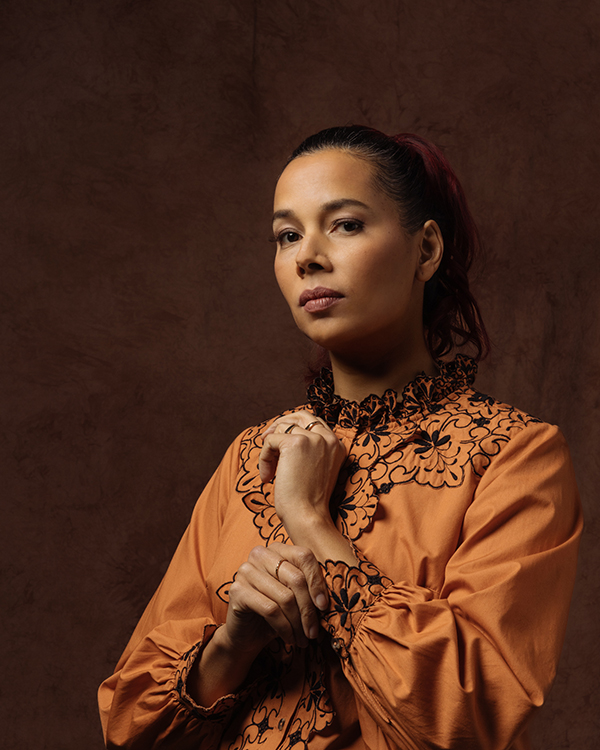
By design, Silkroad Ensemble and its members are influenced by and practiced in a wide array of musical traditions, drawing from the US, Southern Asia, West Africa, and southern Europe. In their latest production under the leadership of artistic director Rhiannon Giddens, the performers explore a concept with which every arts-lover will be familiar: the power of music to “help understand our world, comfort people, help people to process loss and a changing environment, and rebuild community based on our own humanity.” And while music as sanctuary is certainly a very personal experience, the artists are especially interested in the many cultural traditions in which music-making is a deeply communal experience, utilizing both the skills and the artistic inspiration of whole groups of people. This production demonstrates the power of creative expression both to affirm existing communities, including those that may have found themselves excluded from other forums, and to create bonded communities through the power of artistic creation.
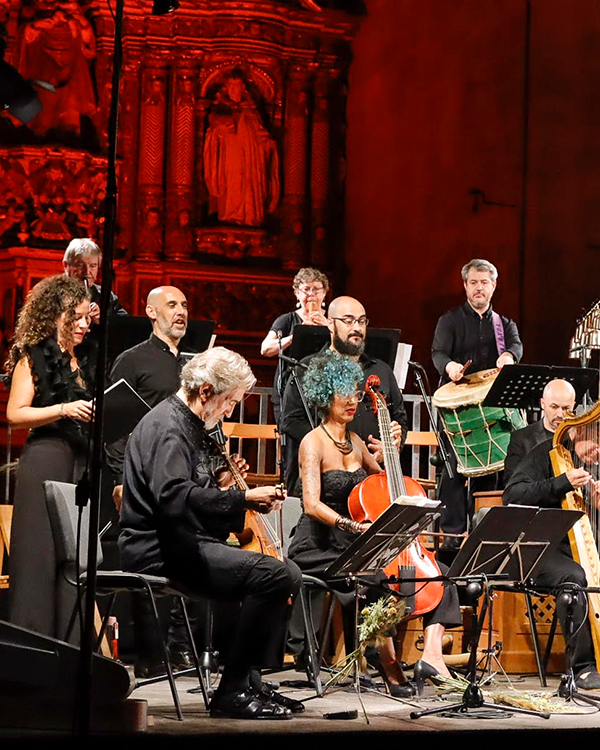
Cal Performances favorite, viol virtuoso Jordi Savall makes his annual visit to Berkeley in April, this time alongside three ensembles—Hespèrion XXI, La Capella Reial de Catalunya, and Tembembe Ensamble Continuo—and special guest performers from Canada, Guinea, Guadeloupe, Mali, Brazil, Cuba, Haiti, and Venezuela. As a sequel to Savall’s Routes of Slavery program, Un Mar de Músicas (A Sea of Music) is dedicated to the 25 million individuals “deported and enslaved…over nearly four centuries, from 1492 to 1888.” In recognition of how wide-spread experiences of exile and displacement were as a result of slavery, Savall’s program draws on music from many affected nations that was either written by, influenced by, or written for those who were enslaved, recognizing both their struggles as well as the ways they relied on one another—and, in some cases, on music itself—to support them during this horrific time. According to the artists, “This program aims to keep the memory of this human tragedy alive through music and lyrics,” acknowledging the contributions and, most importantly, the humanity of formerly enslaved people throughout the world.

In May, Northern California’s own multifaceted Lara Downes, who shares her brilliance with the world as both classical pianist and NPR host, brings together an eclectic group of individuals to tell the story of American music through sound. Specifically, Downes is joined by folk music legend Judy Collins; poet/songwriter and singer for Tank and the Bangas, Tarriona “Tank” Ball; Invoke Quartet; and the Oakland Interfaith Gospel Choir, dedicated to “uniting all people through Black gospel and spiritual music.”
In July 2026, the US will have been established for 250 years. In creating this program, Downes reflected on where the nation began, and the idea that America represented a sanctuary for many of the first waves of immigrants fleeing their original countries, often as a result of being persecuted for their backgrounds and beliefs. In the words of Downes, “Whatever you’re coming from or leaving behind, this country has historically offered an opportunity for reinvention, for new paths forward.” The program is meant to draw on the resulting music across different cultural traditions that emphasizes “shared human experiences and journeys that connect us as Americans.” Of course, this promise of freedom was not granted to all individuals, and was certainly not reflective of the experience of Native Americans and Black people forcefully brought to America. And yet, even within these groups for whom the nation itself did not promise sanctuary, the music borne from their experience helped to unite and define those who found themselves exiled. Throughout the concert, Downes works with her collaborators to unpack this intricate historical narrative through music, and to illuminate what exile and sanctuary represented to various American communities across the centuries.
Related Events
Explore More 2025–26 Season Features
Cal Performances’ 2025–26 Dance Artists Share Highlights of Their Upcoming Performances

Cal Performances’ 2025–26 Dance Artists Share Highlights of Their Upcoming Performances
“Half affirming, half surprising, and entirely exciting!”
Each season, Cal Performances’ dance series presents a wide range of dance companies, and while our programming can be relied on to welcome return engagements with familiar favorites, we also take pride in introducing audiences to choreographers and companies who have not previously made it to Berkeley. As we considered the full range of dance offerings this season, we thought it would be helpful to hear directly from each troupe about one aspect of its upcoming campus visit that might be considered a company hallmark, something that loyal audiences have come to recognize and eagerly anticipate with each new production. We also asked them to identify an element of their upcoming performances that is new or unique, and that even longtime fans may not anticipate. We hope that this overview is half affirming, half surprising, and entirely exciting!
Steeped in a revered ballet tradition that dates to the court of Louis XIV, the stunning dancers of the Paris Opera Ballet meet the visceral and emotive choreography of London-based choreographer Hofesh Shechter in the North American premiere of a new evening-length work. Shechter is known for creating vivid, urgent cinematic tableaus in his acclaimed works, and his bold new creation has been envisioned especially for this exquisite company.
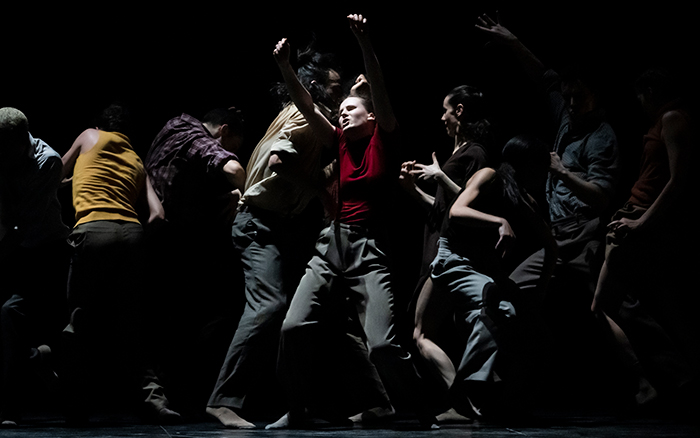
The familiar/trademark: The company shared, “Following the repertoire additions of The Art of Not Looking Back in 2018 and Uprising and In Your Rooms in 2022, Hofesh Shechter extends his collaboration with the Paris Opera by offering the Ballet’s dancers the experience of a new production, the first he has given to a company other than his own. This is an opportunity for him to continue working with performers he knows well, who display all their virtuosity in his choreographic universe.”
The new/unexpected: According to Paris Opera Ballet, “For this creation, Hofesh Shechter imagines a cabaret noir atmosphere, in which the dancers are accompanied by a live band. Red curtains, reminiscent of the velvet of the Palais Garnier auditorium, open and close in a mobile staging reminiscent of an offbeat cafe-theater.”
Contemporary dance and ancient martial arts combine in this award-winning collaboration between choreographer Sidi Larbi Cherkaoui, sculptor Antony Gormley, composer Szymon Brzóska, and 20 Buddhist monks from the Shaolin Temple in China’s Henan Province. Sutra explores the Shaolin kung fu tradition in the context of contemporary culture, inviting a cadre of modern-day practitioners to lend their skills—the flying kicks, backflips, and shadow-boxing practiced as part of their spiritual discipline—to a humorous fable about a European outsider learning about their monastery.
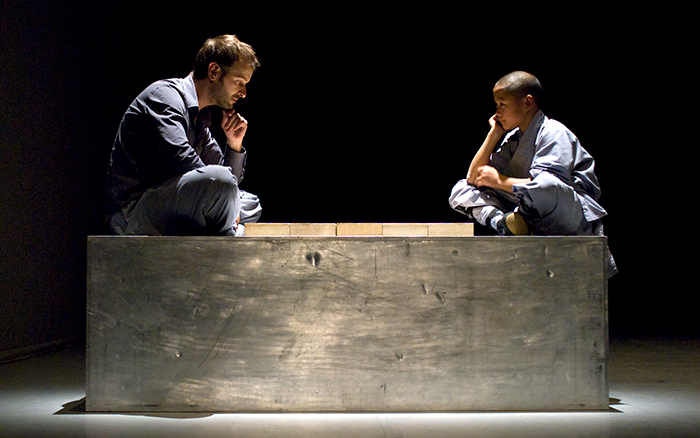
The familiar/trademark: Of the themes and incredible collaborations illuminated in this work, Sadler’s Wells shared that, as a company, it is a “world-leading creative organization dedicated to dance in all its forms. With over three centuries of theatrical heritage and a year-round program of performances and learning activities, it is the place where artists come together to create dance, and where people of all backgrounds come to experience it—to take part, learn, experiment, and be inspired. Its vision is to reflect and respond to the world through dance, enabling artists of all backgrounds to create dance that moves us and opens our minds, and sharing those experiences with the widest possible audiences—to enrich their lives and deepen their understanding of what it means to be human.”
The new/unexpected: When developing the choreography for Sutra, Cherkaoui worked with the monks to learn about not only kung fu, but also fascinating other traditions they had of embodying movement, which ultimately influenced the production’s incredibly unique choreography. Cherkaoui shared, “That very first time [I visited the temple], it was all about movement. Martial arts and Shaolin kung fu have movements, so I was just asking, what are the moves you have, and what’s the vocabulary? And then, from what they showed me, there were some things that I felt were really interesting, and others that I didn’t know how to approach. I loved their animal incarnations, when they’re being like a panther or moving like a snake. It’s real theater—and it’s like dance. When you’re doing Swan Lake, you have to believe you’re a swan. And so, when you have a martial artist who believes he’s an eagle, it’s the same, the same imagination.”
Blending illusion and acrobatics with a sense of whimsy and wonder, MOMIX’s Alice, created by company founder Moses Pendleton, features the bold athleticism and theatrical flair of the troupe’s celebrated dancers as they traverse a series of absurdist vignettes inspired by Lewis Carroll’s classic children’s novel, Alice’s Adventures in Wonderland. Because the story itself is so closely tied to transformation and defying-logic, it provides an incredible canvas to play with movement and illusion that is seemingly performed by magic!
The familiar/trademark: According to Moses Pendleton, “While I don’t intend to retell the whole Alice story, I do intend to use it as a taking-off point for invention. I’m curious to see what will emerge, and I’m getting curiouser and curiouser the more I learn about Lewis Carroll, who, like me, was a devoted photographer.”
The new/unexpected: Audiences may be surprised to learn that, per Moses Pendleton, “all of the stunts, tricks, and illusions are done by the eight company members—no additional help needed!”
Mark Morris Dance Group, one of the world’s leading dance companies today, has fostered a close relationship with Cal Performances, having first performed in Berkeley in 1987 and making annual visits since 1994. Though the company certainly represents one of Berkeley audiences’ favorite regular performers, Morris never fails to offer something fresh and exciting with each new visit. In this his latest creation, Morris looks upward for inspiration—at the Moon!—to explore mankind’s fascination with our constant celestial companion. Live and recorded music, from folk songs to pop hits to concert works, provide the sonic backdrop for MOON, a poetic and playful reflection on our attempts as earthlings to understand our enigmatic neighbor.
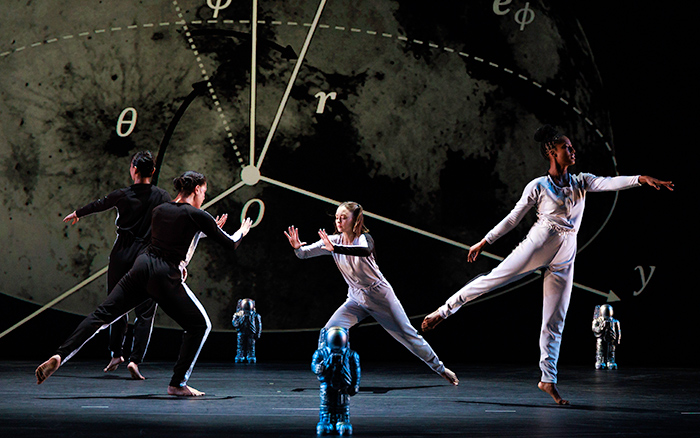
The familiar/trademark: MOON follows a long tradition of Morris productions in which the art engages with its subject in a creative way, without trying to force a specific interpretation. Per Morris, “MOON is a dance and music show built on thoughts and studies of our Moon. The source of so much mystery, curiosity, ritual, superstition, art, and fascination, there is a lot to celebrate and to puzzle over. Our Earth and its Moon are a match made in heaven, with our Moon as a dazzling accessory to Earth’s terrible beauty. Moon is credited with time and tide, fertility, power, and romance. The desire to touch the moon and know about it has always driven us, as has the compulsion to make contact with potential beings on other heavenly bodies. The famed, futile Golden Record which was thrown into space aboard Voyager in 1977 is a perfect example of our curiosity and enormous ego. I have used it and a variety of other materials—textual, visual, and musical—as sources of imagination in the construction of this piece. The Space Program, The Moon Landing, the 12 earthlings who have walked thereon…so many passes have been made at and beyond the moon, but the occasional Moon walk is not enough to satisfy our Earthly need to spread the news about ourselves and wait, no doubt forever, for a response. I hope to provide a possible way to observe and enjoy Moon and space, without understanding a thing.”
The new/unexpected: A special treat for the aesthetics of this particular creation, Morris shares, “MOON features stage projections by ‘the godmother of modern projection design,’ Wendall K. Harrington,” whose credits include sets for more than 35 Broadway shows and numerous prestigious awards.
It is impossible to overstate Martha Graham’s influence on dance in the past century. Her distinctive, groundbreaking movement technique has been carried in dancers’ bodies for generations; the works she commissioned have grown and multiplied over hundreds of performances; and her contributions to the art of stage design and dance production are countless. This season, the company returns to Cal Performances for the first time in more than a decade to celebrate its 100th anniversary with classic Graham works alongside newly commissioned dances by some of today’s most compelling choreographers.
The familiar/trademark: The company shared, “We are bringing three iconic Graham masterworks to Cal Performances—dances that are considered to be some of the greatest works of 20th century American art. Graham created Chronicle in 1936, the same year she turned down the Nazi’s invitation to dance at the Olympic Games in Berlin. With a cast of 11 women, it offers a powerful anti-war statement. Night Journey (1947) is Graham’s radical transformation of the Oedipus story, told through the memories of Jocasta, his wife and mother. And Appalachian Spring, probably Graham’s best known work, with its Pulitzer Prize-winning score by composer Aaron Copland, still resonates with American determination, optimism, and hope for the future. These timeless classics are brought brilliantly to life and relevancy by the current dancers of the Martha Graham Dance Company. They are among the most athletically powerful and expressive dancers on the planet. Audiences will see Graham’s famous physical vocabulary, the Graham Technique, with its essential moves—the ‘contraction and release’—performed by today’s leading experts in her style.”
The new/unexpected: According to the company, “Audiences may not realize that the current Martha Graham Dance Company performs stunning new works from some of today’s top choreographers alongside Graham classics. We are bringing a wonderful dance that we premiered in 2024 to Cal Performances: We the People by choreographer Jamar Roberts, with a commissioned score from Rhiannon Giddens. Rhiannon’s music has a traditional bluegrass sound and provides a toe-tapping backdrop for Jamar’s athletic, hard-driving movement. We are also dancing an even newer work, Cortege, which premiered in 2025 by choreographic duo Baye & Asa. These rising stars in the dance world have created a work for eight dancers inspired by Martha Graham’s own 1967 choreography in Cortege of Eagles. Intense, hyper-physical, and dramatic, Cortege is not to be missed. Audiences who don’t know the work of Baye & Asa will be excited to discover them.”
Visionary choreographer Kyle Abraham is known for telling stories at the intersection of Black and queer culture, reflecting on themes of love, isolation, and personal and social change. In February, Abraham brings his accomplished A.I.M to Berkeley for its eagerly anticipated Cal Performances debut, featuring three works danced to live music by a number of accomplished musicians.
The familiar/trademark: The company shared, “Kyle’s work has been a part of Cal Performances for some time. Audiences may recognize his name in pieces performed by Alvin Ailey American Dance Theater, including Another Night (2012), Untitled America (2016), and Are You in Your Feelings? (2022).” Regarding dances on this debut program, they shared, “Created as one of three repertory works during Kyle Abraham’s tenure as Resident Commissioned Artist at New York Live Arts from 2012–2014, The Gettin’ (2014) is a work for six dancers set to music by Grammy Award-winning jazz artist Robert Glasper and his trio, who reimagine Max Roach’s We Insist! Freedom Now Suite.” On the whole, “Abraham describes his movement vocabulary as ‘a postmodern gumbo,’ one with roots in social dance and a love for blending movement vocabularies including, but not limited to, ballet and contemporary dance.”
The new/unexpected: One exciting element on this particular program is the inclusion of live musicians. Per Kyle Abraham, Artistic Director, “Live musical performance adds dimension. Musicians make choices that allow the dancers to react in real time, making every performance unique and one of a kind.”
From its first public performances in 1958, to the premiere of the masterpiece Revelations in 1960, through the struggles of touring in the Civil Rights Movement, to the tragic loss of its founder in 1989—across so much social upheaval and cultural change, Alvin Ailey American Dance Theater has thrived as a model of Black resilience and unparalleled artistic excellence. With brand-new commissions from next-generation creators and beloved works by Ailey himself, this revered institution has embodied exceptional power, beauty, and grace each time they’ve made their annual visit to the Berkeley campus for the past 57 years.
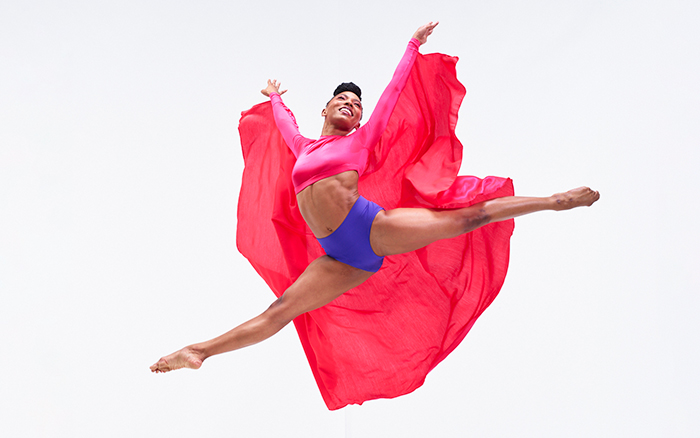
The familiar/trademark: The company shared, “There are very few experiences in modern dance akin to the one shared by audiences watching Alvin Ailey American Dance Theater perform Revelations. Whether witnessing it for the first time or the hundredth, people feel the ballet’s communion with African American cultural heritage—its spiritual, uplifting power that speaks to people everywhere. The work’s three acts trace an arc from resilience to elation, and it is a hallmark of every Ailey performance to see audiences on their feet by the ballet’s curtain call.”
The new/unexpected: Per the company, “The 2025–26 season will mark Alvin Ailey American Dance Theater’s first under the new artistic directorship of Alicia Graf Mack, and she is bringing her unique perspective to bear on the Company’s program. Having danced with the Company for six years and acted as dean and director of the Juilliard Dance Division, her mandate is to bring Alvin Ailey American Dance Theater into the future, showing the Ailey dancers in new ways while honoring the Company’s historic past.” Though this will be her first Ailey Week at Cal Performances under her new title, Berkeley audiences have seen her dance with the Company many times throughout the years, and Cal Performances is thrilled to welcome her back in this new capacity!
The peerless Joffrey Ballet returns to Zellerbach Hall with a signature blockbuster work, Alexander Ekman’s daring, sensual, exuberant celebration of the traditional Scandinavian summer solstice festival. Dancers cavort in pastoral revelry as reality and fantasy blur in a joyous ode to the arrival of the summer season. A mind-bending trip to a surreal realm of earthly and supernatural delights, Midsummer features a score by composer Mikael Karlsson and features Swedish indie rock sensation Anna von Hausswolff, who performs live.
The familiar/trademark: The company shared, “Ekman’s ode to the longest day of the year follows a traditional Midsummer festival—from a passionate, lively celebration by day to a whirlwind dream by night. Ekman’s picturesque fusion of classical and contemporary ballet blurs the line between the real and the imagined, making audiences wonder, ‘Was it all just a dream?’”
The new/unexpected: “Alexander Ekman dares to be bold with Midsummer Night’s Dream, creating an astonishing dance-theater performance of tremendous theatricality and scale,” says The Mary B. Galvin Artistic Director Ashley Wheater, MBE. “Playing to the strengths of Joffrey company artists to convey the evolution of our art form, woven together with the trailblazing talents of Ekman’s creative team, Midsummer gifts audiences with an unforgettable experience.”
Related Events
Explore More 2025–26 Season Features
Spotlight on Classical Music Across 2025–26
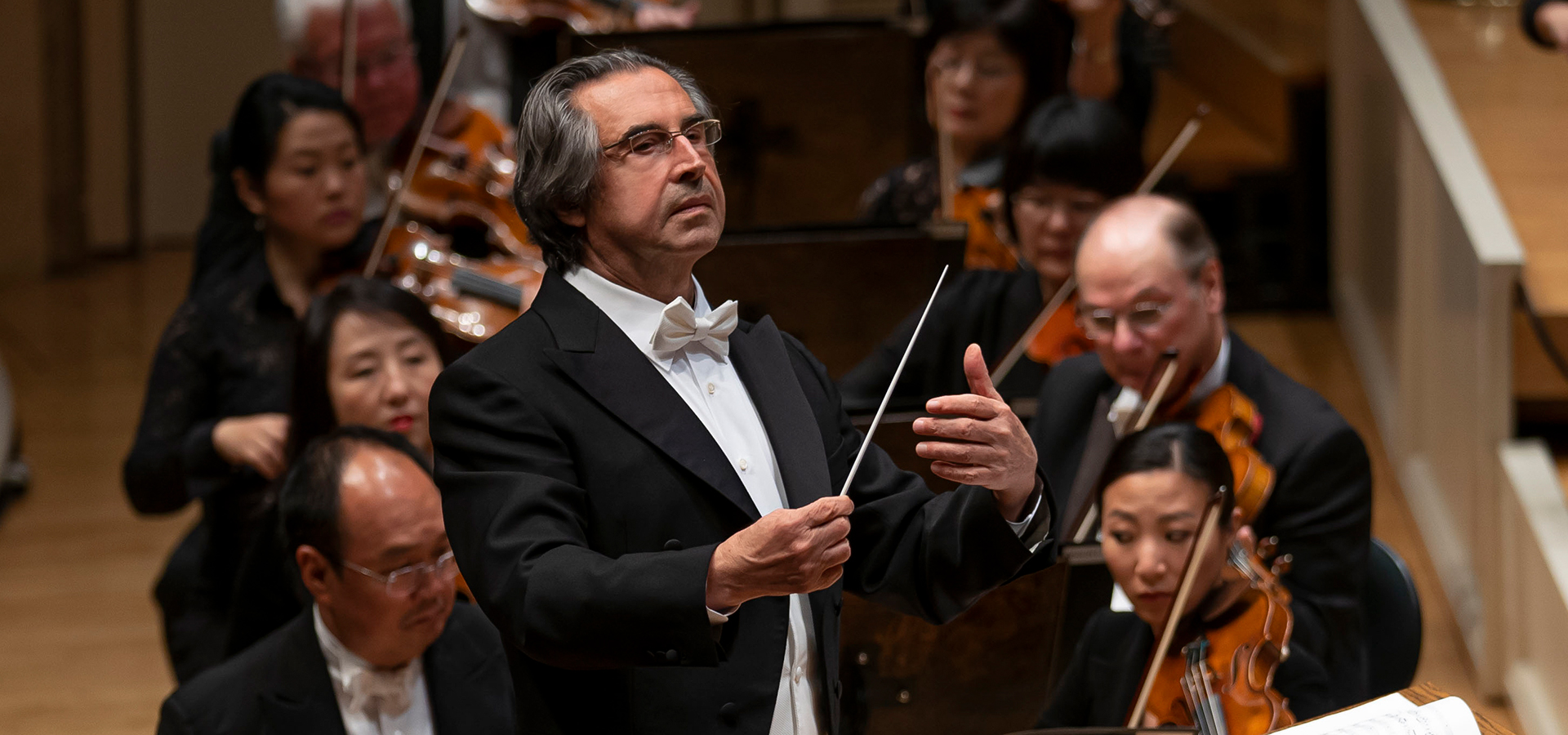
Spotlight on Classical Music Across 2025–26
A feast for the ears across orchestra and recital series!
By Janet E. Bedell, Cal Performances-commissioned writer
Cal Performances’ 2025–26 season offers a robust selection of classical music performances across recital, chamber, and orchestra formats, that collectively serves as a powerful reminder of just how relevant and resonant these core masterworks remain to this day. Below, you’ll find a deep-dive on five classical recitals and one orchestra performance, each of which offers something distinct, reflected in both the repertoire and in the unique interpretive talents and virtuosity of the artists bringing these works to life.
Program: Bach’s Six Partitas for Solo Keyboard
One of America’s truly multifaceted artists—attested to by his being selected as a MacArthur “Genius” Fellow—Jeremy Denk makes his return to Cal Performances. With a wide-ranging repertoire, he is especially renowned for his performances of J.S. Bach; his recording of the Goldberg Variations reached No. 1 on the Billboard Classical Charts, while his performance of the Well-Tempered Klavier, Book I was one of the highlights of the Cal Performances at Home 20–21 digital season.
Among Bach’s greatest keyboard masterpieces is the modestly named First Clavier Ubung (“Keyboard Exercises”), which comprise the six keyboard partitas—his ultimate demonstration of the Baroque dance suite form. Usually, we get to hear one or two of these on a concert, but Denk’s performance offers the rare opportunity to hear all six in a single evening! These are immensely challenging pieces in terms of technical difficulty as well as artistic depth. Bach takes the standard Baroque dances—allemandes, courantes, sarabands, and gigues—and rings ingenious changes on them. Each partita has its own personality, established in its opening movement; some are predominantly light and fast, while others, like the great Nos. 4 and 6, are rich and meditative. There are standout movements throughout, such as No. 6’s magnificent opening Toccata (the last he wrote), with a length and complexity that makes it a complete piece unto itself; and the spectacular Gigue closing No. 4, a high-speed fugue that grows into a double fugue. Bach’s first biographer J.N. Forkel claimed, “He who has learnt to play a few of them could make his fortune.”
Program to include Brahms’ Symphony No. 4, Stravinsky’s The Fairy’s Kiss, and Ravel’s Boléro
The revered Italian conductor Riccardo Muti became the Music Director of the Chicago Symphony Orchestra in 2010, making this renowned orchestra a pacesetter among America’s Big Five orchestras. With the 2024–25 season, he has transitioned to the post of Music Director Emeritus for Life, continuing one of this country’s legendary artistic partnerships.
Muti brings a well-balanced musical feast to Zellerbach in which the main course is followed by an aperitif, and then dessert. Known for his mastery of Brahms repertoire, he has chosen Brahms’ Fourth Symphony, the composer’s last and arguably greatest, to open the program. The famous Hans von Bülow, who co-conducted with the composer for the Fourth’s first performances in 1885, called it “stupendous,…individual and rocklike. Incomparable strength from start to finish.” This symphony boasts Brahms’ most uninhibited, joyful scherzo, as well as the magnificent passacaglia finale, which builds 30 wondrous variations over a theme Brahms borrowed from Bach. The aperitif is Stravinsky’s ballet The Fairy’s Kiss, based on a Hans Christian Anderson fairy tale. Stravinsky was a shape-shifter throughout his long career—sometimes a radical modernist, at others, an ironic neo-Classicist. Here, he revealed his surprising lifelong love of Tchaikovsky by creating a ballet that borrows from some of Tchaikovsky’s little-known piano pieces alongside Stravinsky’s own imitations of the older composer’s style, complete with Tchaikovsky’s characteristic melodic gestures and overall Romantic sweep. The dessert is Ravel’s immortal Boléro, an intoxicating exploration of a single boléro rhythm and two closely related exotic melodies.
Program to include Schumann’s Dichterliebe, as well as songs by Porter, Poulenc, Satie, Schoenberg, Trenet, Weill
Making her debut at Cal Performances, American mezzo Samantha Hankey—boasting a rich, bronze-toned voice combined with dramatic prowess—is an exciting young rising star. Already in high demand by opera houses and concert halls in Europe, she achieved wider fame in America in 2023 when she sang Octavian in Strauss’ Der Rosenkavalier opposite Lise Davidsen at the Metropolitan Opera in a performance featured on the Met’s Live in HD series. Debuting recently at Carnegie Hall, Hankey also has devoted herself to lieder programs that are refreshingly off the beaten track.
At Cal Performances, she will sing Schumann’s cornerstone cycle Dichterliebe (“A Poet’s Love”) song cycle. While Dichterliebe is often associated with male voices (tenors and baritones), the fact that it was dedicated to a soprano shows that it was conceived with the possibility of female voices performing it in mind. Surrounding this beloved staple of German Romantic lieder will be songs in three languages by a selection of 20th-century composers—Poulenc, Satie, Schoenberg, Weill, and Cole Porter—who mostly come from the worlds of jazz, cabaret, and Broadway. We’ll hear an unexpected side of Schoenberg in the light-hearted “Gigerlette” from his early Brettl-Lieder inspired by the risqué Berlin cabaret style. Another surprise is “Boum!,” a vivacious tongue-twister by French singer-composer Charles Trenet. Like Trenet, master American songwriter Cole Porter wrote the words as well as the music for his film scores and Broadway musicals; his poignantly romantic “So in Love” was written for the two estranged lovers in Kiss Me Kate, an enduring Broadway favorite based on Shakespeare’s comedy The Taming of the Shrew.
Program to include Saint-Saëns’ Bassoon Sonata; Carlos Simon’s hear them; John Musto’s Shadow of the Blues; Beethoven’s 7 Variations on “Bei Männern, welche Liebe fühlen”; and Barber’s Cello Sonata
The first saxophonist to win First Prize at the Young Concert Artists Auditions as well as the prestigious Avery Fisher Career Grant, the multi-talented Steven Banks is both a composer and a virtuoso performer striving to bring his instrument—long associated with jazz—into the heart of classical music. In 2022, he premiered his own Cries, Sighs and Dreams, a work for alto saxophone and string quartet, with the Borromeo Quartet at Carnegie Hall. Banks also has devoted himself to playing works originally written for other instruments, and his wonderfully eclectic Cal Performances program Golden Silhouettes will tackle works created for bassoon, voice, and cello. The highlight of this program, however, is Carlos Simon’s hear them, a work that is actually intended for the baritone saxophone and was written on a commission from Banks. It is a superb tone poem that showcases Banks’ dramatic instincts and the variegated tones of his instrument, from high, almost human cries, to the inky growling of its bass register. Simon, who has just been appointed as the Boston Symphony’s first-ever Composer-in-Residence and Boston Symphony Orchestra’s first-ever Composer Chair, writes, “I have been constantly aware of the presence of my ancestors in my life… This piece was inspired by a poem by Nayyirah Waheed, which simply asks the ancestors to speak louder if you cannot hear them.”
Written in 1921, the penultimate year of his long and prolific career, Camille Saint-Saëns’ suave French Bassoon Concerto is filled with beautiful singing lines as well as wit and virtuosity. Brooklyn-born composer John Musto’s Shadows of the Blues was originally a four-song cycle setting of poems by Langston Hughes about life in Harlem in the early 20th century. Here Musto, the son of a jazz guitarist, deftly mixes contemporary art-song style with haunting traces of the blues. We’ll also hear two works composed for the cello: Beethoven’s charming variations on “Bei Männern, welche Liebe fühlen” and Samuel Barber’s Cello Sonata. The Beethoven is a cello showpiece based on the exquisite friendship duet “Bei Männern,” sung by Pamina and Papageno in Mozart’s Die Zauberflöte. Barber wrote his Cello Sonata in 1932 when he was only in his early twenties. A passionate neo-Romantic work, both lyrical and dramatic, it bears a strong resemblance to the music of Brahms, a composer Barber particularly adored at that time.
Program to include Ligeti’s Fanfares; Beethoven’s Moonlight Sonata; Chopin’s Nocturnes, Selected Impromptus, and Fantaisie Impromptu; Ravel’s Alborada del gracioso; Albéniz’s “El Puerto” from Iberia; and Liszt’s Rhapsodie espagnole
The winner of First Prize at the 2021 International Chopin Competition, Chinese-Canadian pianist Bruce Liu is another young star making his Cal Performances debut this season. Liu began his piano studies at the age of eight, and made his debut with the Cleveland Orchestra just seven years later. Praised by the BBC Music Magazine for “playing of breathtaking beauty,” this Montreal native combines a refined, poetic tone with a capacity for fiery technical virtuosity when the music demands it. His first CD with Deutsche Grammophon featured his winning Chopin performances in Warsaw and was selected by Gramophone magazine for its list of the “Best Classical Albums of 2021.” Naturally, Chopin’s music will hold a prominent place in Liu’s Berkeley recital, including the two beautiful Nocturnes of Opus 27. Also featured will be three of the composer’s Impromptus in addition to the well-loved Fantasie Impromptu in C-sharp minor. This last work is included because it bears strong connections with Beethoven’s Moonlight Sonata, also on the program, a work subtitled “Quasi una fantasia” (“almost a fantasy”) and is in the same key as the Chopin.
An unusual offering opens the program: Ligeti’s demanding “Fanfares” from his 1985 Etudes, Book 1. A work of coruscating brilliance and immense technical difficulty, “Fanfares” juxtaposes an angular fanfare motive with a continuous ostinato; the combination progressively creates intense polyrhythmic clashes between the two. Finally, Liu has chosen three sparkling Spanish-inspired pieces—Ravel’s humorous favorite Alborada del gracioso (“Morning Serenade of a Jester”), Albéniz’s “El Puerto” from his masterpiece Ibéria, and Liszt’s Rhapsodie espagnole. Since he was the only composer of the three who actually was Spanish, Albéniz’s colorful salute to the doorway of the Cathedral de Santa Maria in Cádiz is the most authentic in flavor, employing the traditional Spanish zapateado dance and reflecting the sound of the guitar. Naturally, Liszt’s rhapsody, based on two popular Iberian dance tunes, is the most spectacular—a suitably bravura recital finale.
Program to include Liszt’s arrangement of Bach’s Variations on “Weinen, Klagen, Sorgen, Zagen”; Medtner’s Piano Sonata in F minor; Chopin’s Prelude in C-sharp minor; Scriabin’s Piano Sonata No. 10; and Beethoven’s Piano Sonata No. 32, Op. 111
In a season rich in great pianists, Alexandre Kantorow’s debut is a concert that no piano aficionado should miss. After his winning the First Prize, Gold Medal, and the rarely given Grand Prix at age 22 at the 16th International Tchaikovsky Competition in 2019, Kantorow’s career took off like a rocket. In 2023, he was given one of the most prestigious piano prizes, the Gilmore Artist Award, while in 2024 the French government made him a Chevalier del’Ordre des Arts et des Lettres. Also in 2024, he was a featured soloist at the opening ceremony of the 2024 Summer Olympics in Paris. Gramophone magazine has described him as a “fire-breathing virtuoso with a poetic charm.”
Kantorow has chosen a remarkable program revealing the breadth of his musical skills. It begins with variations (Liszt’s meditative Variations on the Theme “Weinen, Klagen, Sorgen, Zagen” after J.S. Bach) and closes with them (Beethoven’s sublime final Piano Sonata, Op. 111). Two highlights of this concert will be sonatas by the early 20th century Russian virtuoso composers Nikolai Medtner and Alexander Scriabin. His music too rarely heard in America, Medtner was a brilliant composer who, upon graduating from the Moscow Conservatory at age 20, won the Gold Medal for piano (the head of the conservatory wishing it could be a Diamond Medal because of Medtner’s exceptional accomplishments!). Shortly thereafter, the composer created his formidable Piano Sonata in F minor, the first of what would be a total of 14 works in the form. A tremendous challenge for any pianist to tackle, this is a powerful late-Romantic work that sweeps the listener irresistibly along from beginning to end.
An eccentric, visionary composer, Scriabin claimed that “the purpose of music is revelation.” He dreamed of uniting nearly all of the senses in his works: hearing, sight, taste, and smell. Kantorow will play the last of his piano sonatas, No. 10, which is another major challenge—both technically and musically—for the pianist. With its abundance of glistening trills fluttering like tiny wings, this sonata is often called his “Insect Sonata,” based on a conversation with Scriabin in which he said, “Insects, butterflies, moths—they are all living flowers…. They are all born of the sun, and the sun nourishes them…. This sun-like caress is the closest to me. Take my tenth sonata—it is an entire sonata from insects.”
Meeting of the Minds: Seven Performances that Each Reflect One-of-a-Kind Artistic Collaborations
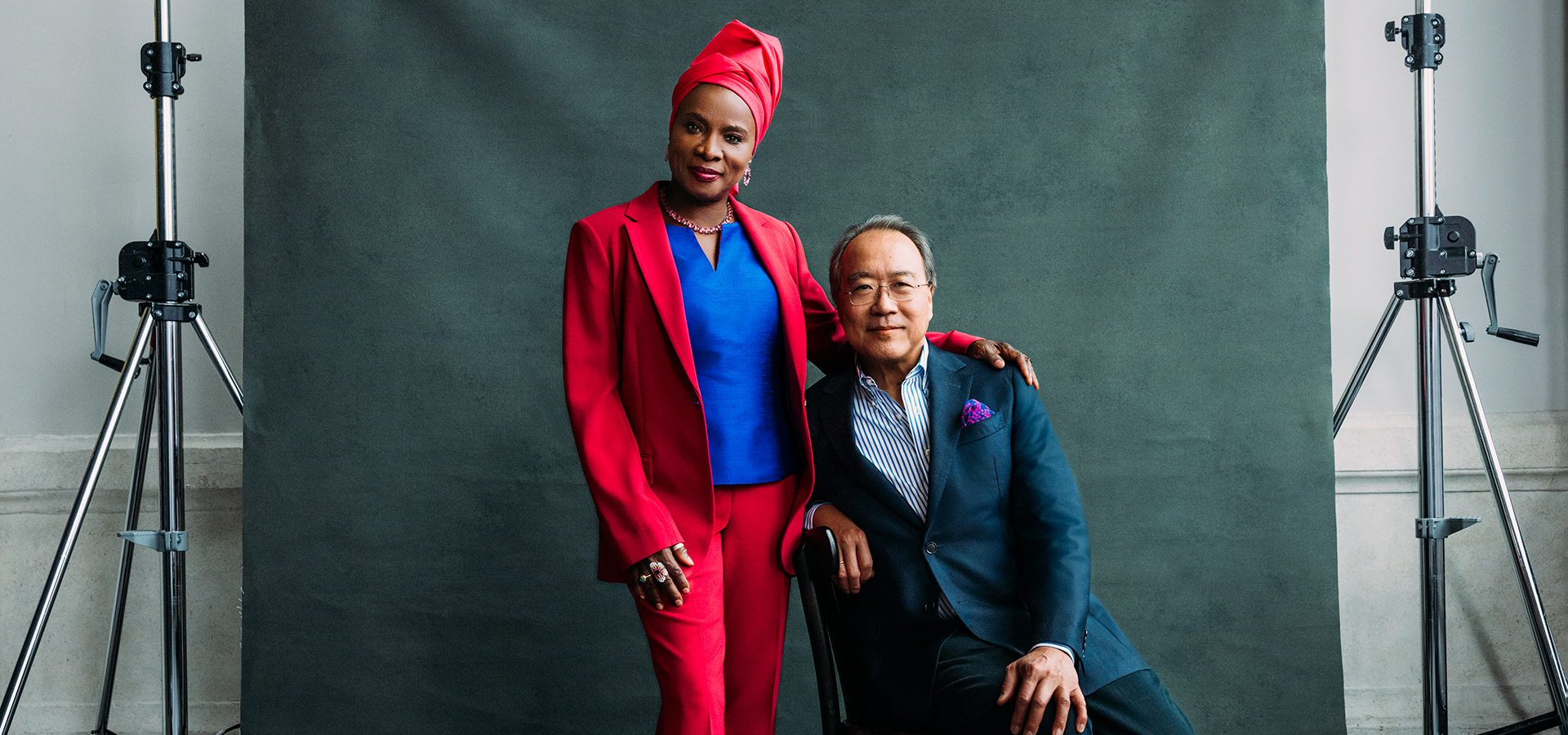
Meeting of the Minds: Seven Performances that Each Reflect One-of-a-Kind Artistic Collaborations
Better Together
One thing that we can confidently say about Cal Performances artists is that each one is among the very best at what they do. And while each artist is incredible in their own right, when titans of live performance combine their efforts, the possibilities truly expand, evolving entirely new experiences for both artist and audience alike! In this article, we highlight a few programs across the 2025–26 season that represent special (and, in some cases, even unlikely!) collaborations. Below, you’ll find brief context for each individual artist, and then hear from the artists themselves about what makes these collaborations so exciting and fruitful.
Sidi Larbi Cherkaoui
Since the late 1990s, he has choreographed more than 50 substantial works of dance, noted for their visceral and emotive sensibilities. His many accolades include two Olivier Awards, three Ballet Tanz awards for best choreographer, and the Kairos Prize.
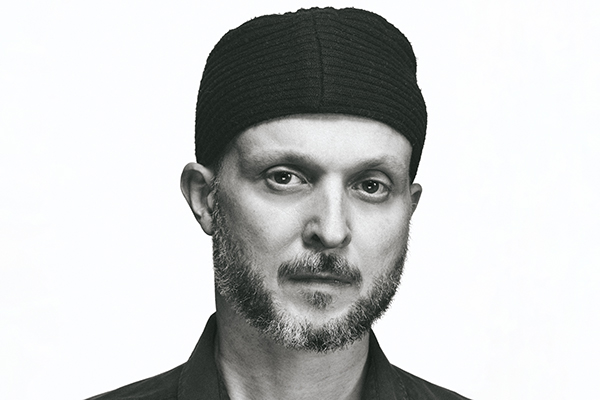
Antony Gormley
Antony Gormley is widely acclaimed for his sculptures, installations, and public artworks that investigate the relationship of the human body to space. His creations have taken up both temporary and permanent residence internationally, and his many honors include prestigious sculpture awards—as well the title Officer of the British Empire (OBE)!
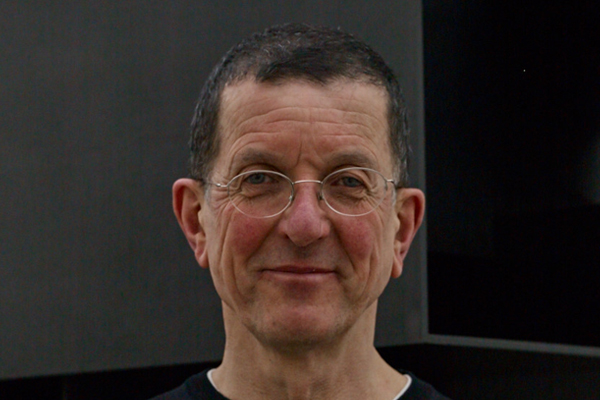
Szymon Brzóska
Composer Szymon Brzóska’s works explore the synergy between music, movement, and image, and his colorful and atmospheric musical language lends itself well to dance. Specifically, this language can be placed somewhere between contemporary avant-garde and expanded tonality with a touch of minimalism.

Monks of Shaolin Temple
Based at the Shaolin Temple in China’s Henan Province, these Buddhist monks have become internationally recognized, studied, and admired for their impressive skills in kung fu paired with—and considered inseparable from—their dedication to spirituality.
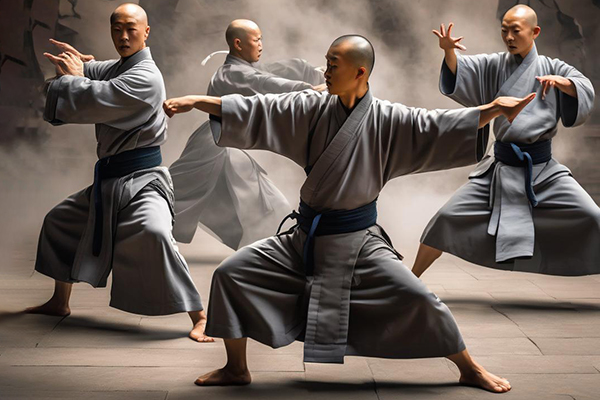
Better Together
In Sutra, a Sadler’s Wells and Shaolin temple production, 20 monks interpret Cherkaoui’s martial arts-inspired choreography, with clever set design by Gormley and a live music score by Brzóska. Speaking about how this particular collaboration with the monks came about, Cherkaoui shared:
“I fell in love with kung fu when I was a child, awed by the high-flying kicks, shadowboxing, and somersaults that had made blockbusters of the movies of Bruce Lee. But as an adult, my interest shifted more towards the philosophy underpinning the form—the idea that all living creatures are part of a universal energy and that the movements of kung fu are a means of channeling that force.”
Angelique Kidjo
A five-time Grammy Award winner, internationally acclaimed musician, and advocate, Angélique Kidjo has been hailed as “Africa’s premier diva.” As a performer, Kidjo has cross-pollinated the West African traditions of her childhood in Benin and fuses them with elements of R&B, funk, and jazz music, as well as influences from Europe and Latin America; and her striking voice, stage presence, and fluency in multiple cultures and languages have expanded her following across national borders.
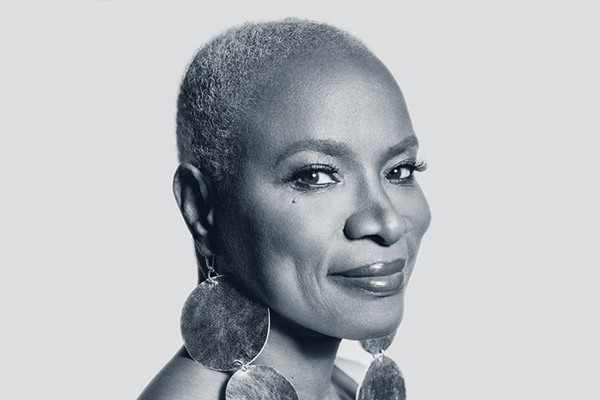
Yo-Yo Ma
Ma is most commonly recognized for his work as a classical cellist, having recorded more than 120 albums and won 19 Grammy Awards for his unparalleled playing. Underpinning his immense musical career is a foundational belief that fostering connections through arts and culture brings communities together to stimulate imagination and reinforce our humanity.
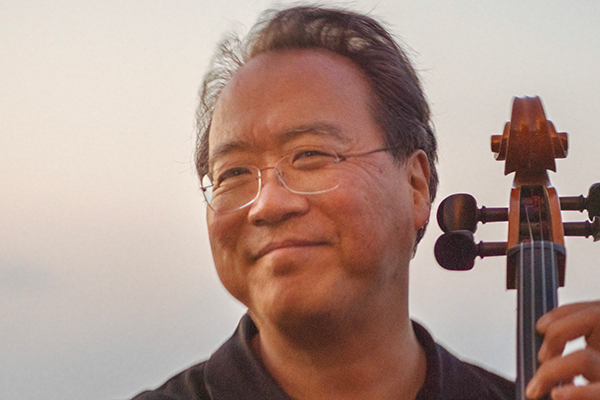
Better Together
In the performance, these two endlessly curious musicians come together to search beyond the edges of their musical backgrounds, exposing the ways we have all been connected for a very long time; it’s a collaboration that asks us to joyfully question the tenets of genre and tradition that underpin our cultural thinking.
Anne Sofie von Otter
The mezzo-soprano retains true diva status as the superlative Octavian (Der Rosenkavalier) of her generation. Internationally acclaimed as one of the world’s finest singers, von Otter has been associated with Carlos Kleiber, Claudio Abbado, and Sir Colin Davis, and is known for genre-crossing collaborations with the likes of Elvis Costello, Brad Mehldau, and Rufus Wainwright.
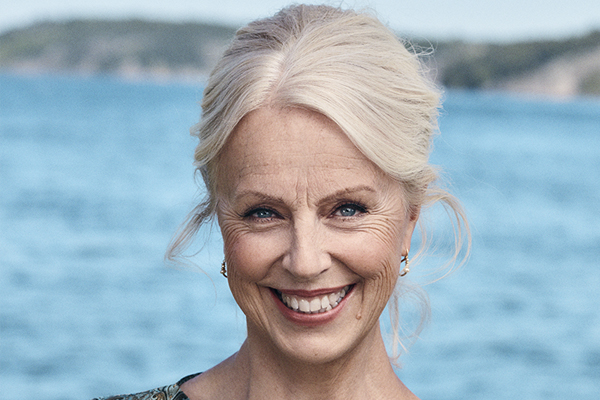
Kristian Bezuidenhout
Kristian Bezuidenhout is one of today’s most notable and exciting keyboard artists, equally at home on the fortepiano, harpsichord, and modern piano. Bezuidenhout is an internationally recognized musician, offering powerful performances as soloist, in recital, and alongside leading ensembles; his solo recital on Cal Performances’ 2022–23 season was reflective of his incredible virtuosity, and instantly endeared him to Berkeley audiences!
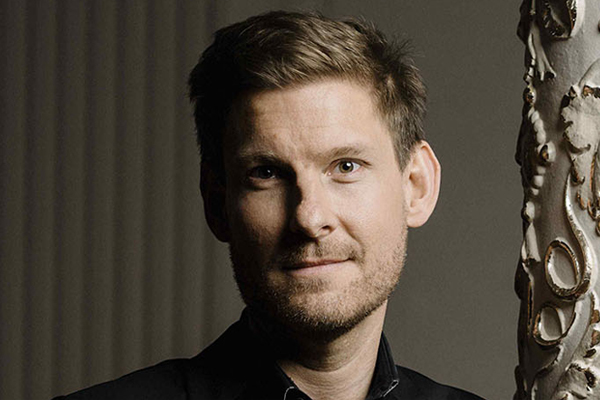
Better Together
In this performance, the two supremely talented and emotive musicians come together seamlessly to explore Schubert’s Schwanengesang song cycle, which moves from love and despair to sorrow and serenity. Of the collaborators’ creative partnership and friendship, von Otter shared:
“Kris and I hit it off at once both socially and musically. We love talking about music and having a good old natter about the goings on in the musical world. Kris is really into all kinds of classical music and reads and goes to concerts whenever he can—it’s lovely to hear his latest. Musically speaking, he is a very open and listening type of musician, and he seems to almost instinctively know what I am going to do before I do it. Our recent staged collaboration (called Eine Winterreise) with Christoph Loy at Theater Basel of Schubert’s songs and piano pieces was a real treat; I got to listen to all of Kris’ fine nuances on a wonderful period instrument all through the rehearsal period and all the 10 shows we did. He works magic and the audience loves him.”
Takács Quartet
Having just celebrated its 50th season, the renowned Takács Quartet continues to deepen its connections to timeless masterworks and enliven the string quartet repertoire through fresh artistic collaborations. The award-winning string ensemble is made up of Edward Dusinberre and Harumi Rhodes (violins), Richard O’Neill (viola), and András Fejér (cello).
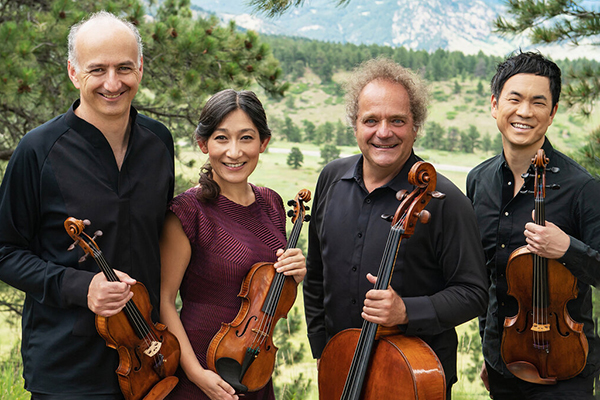
Jordan Bak
Award-winning Jamaican-American violist Jordan Bak has achieved international acclaim as a trailblazing artist, praised for his radiant stage presence, dynamic interpretations, and fearless power. Though he is revered for his expertise with the canonical works of classical music, he is also a proud new music advocate and has given world premieres for important works of our time.
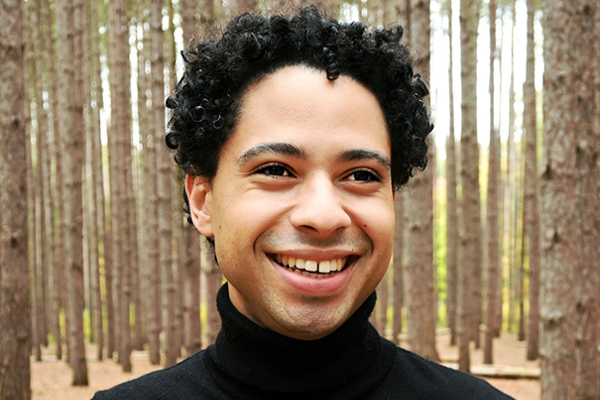
Better Together
For its first concert on the 2025–26 season, Takács Quartet is joined by Jordan Bak in his Cal Performances debut for a rare performance of Mozart’s revelatory viola quintets in C major (K. 515) and G minor (K. 516). Richard O’Neill, Takács Quartet violist, shares:
“Mozart’s viola quintets hold a special place in the chamber music canon, with the added viola as the secret ingredient in their sonorous blend. We are thrilled to collaborate with violist Jordan Bak, whose playing first impressed me while judging the Juilliard School’s concerto competition (which he won).” Of the program, he shared, “It’s remarkable that these two masterpieces received so little attention—and Mozart so little reward—upon publication. The luminous C major and the tragic G minor quintets capture the full range of human experience, from its heights to its depths, and everything in between. In the C major, be on the lookout for its sinfonia concertante-like Andante, and in the G minor, the chiaroscuro struggle that permeates throughout.”
Jordi Savall
A long-time Berkeley favorite and regular performer on Cal Performances’ early music series, Savall is one of the world’s foremost interpreters and performers within the genre, and is revered for his work as a researcher, gambist, and conductor. He has dedicated much of his more than 50-year career to reviving and unearthing early music gems.
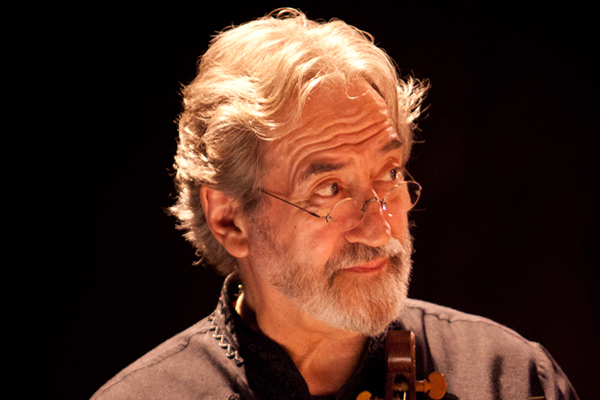
La Capella Reial de Catalunya
Jordi Savall and his late wife, the exceedingly talented Montserrat Figueras (both of whom have made many trips to Berkeley over the years) founded this Grammy Award-winning vocal group as one of the first devoted to the performance of Golden Age music and consisting exclusively of Hispanic and Latin voices. The ensemble specializes in the recovery and performance based on historical principles of the polyphonic and vocal music of Spain and Europe from the Middle Ages and Golden Age up to the 19th century.
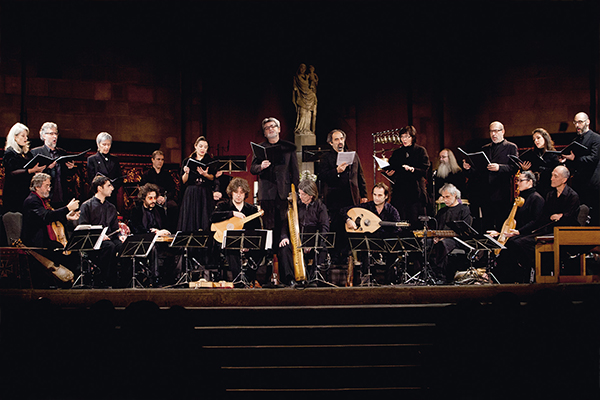
Hespèrion XXI
This early music instrument ensemble was founded by Savall and Montserrat Figueras, Lorenzo Alpert, and Hopkinson Smith as a way of recovering and disseminating the rich musical repertoire prior to the 19th century on the basis of historical criteria and the use of original instruments. Their performances are informed and complemented by rigorous research on the music of the period between the Middle Ages and the Baroque.
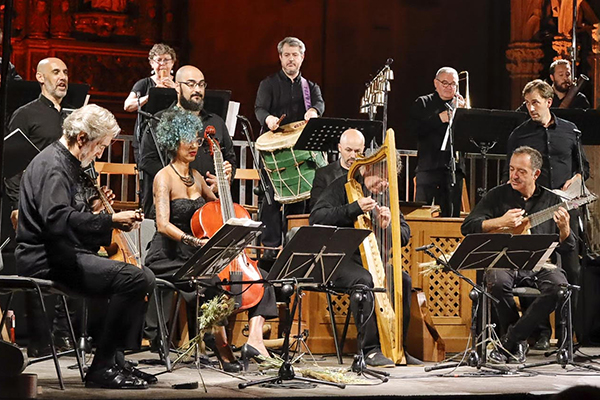
Tembembe Ensamble Continuo
This Mexico City-based chamber group is dedicated to the research and dissemination of Hispanic Baroque music, thoughtfully connecting it to traditional music from Mexico and Latin America more broadly. The group has been known to play, dance, and sing in lively concerts that immerse audiences in important musical traditions of the past.
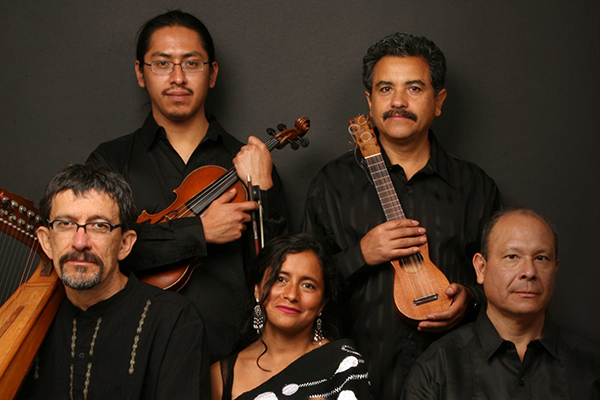
Better Together
This performance, which is a follow-up to Savall’s Routes of Slavery program, honors the more than 25 million people enslaved by Western nations throughout history. Savall is joined on stage by nearly three dozen musicians, including Hespèrion XXI and La Capella Reial de Catalunya, Tembembe Ensamble Continuo, and special guest performers from Canada, Guinea, Guadeloupe, Mali, Brazil, Cuba, Haiti, and Venezuela who place their rich musical traditions in dialogue with Spanish and European forms. Cuban singer Teresa Yanet, who performs on the program, shared:
“Being part of the A Sea of Music project with maestro Jordi Savall has been a true gift. Sharing the stage with incredible musicians from Africa, Mexico, Brazil, the United States, and other places has allowed me to experience music in an even deeper way. What has impacted me the most is all that I’ve learned, not only musically, but also on a personal level. There’s something magical about approaching music with an ancient vision, almost like traveling through time, but with the energy and talent of exceptional musicians. It has been a unique experience that has filled my soul.”
Lara Downes
Lara Downes is celebrated for her dynamic work as a piano soloist; recording artist; an NPR personality as host of her popular video show, Amplify with Lara Downes; and the host of “Evening Music with Lara Downes” on the Bay Area’s own classical radio station, KDFC. Downes’ musical roadmap seeks inspiration from the legacies of history, family, and collective memory, excavating a broad landscape of music to create projects that serve as gathering spaces for her listeners to find common ground and shared experience.
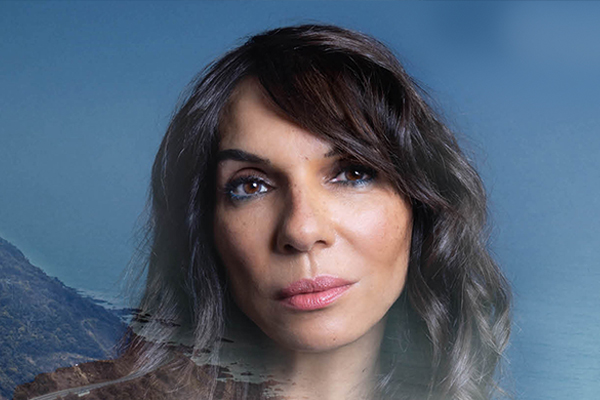
Judy Collins
This award-winning singer-songwriter is esteemed for her imaginative interpretations of traditional and contemporary folk standards and her own poetically poignant original compositions. Collins is celebrated for her strong history of activism; since the 1960s, she has evoked both the idealism and steely determination of generations that continue to unite against social and environmental injustices.

Tarriona “Tank” Ball
Tarriona “Tank” Ball is a New Orleans-based slam poet and Grammy-nominated recording artist with her band, Tank and the Bangas, which is known for reflecting a compelling mix of soul, hip-hop, R&B, and jazz sounds native to Ball’s home city.

Invoke Quartet
The multi-instrumental quartet encompasses traditions from across America, including bluegrass, Appalachian fiddle tunes, jazz, and minimalism. Fueled by their passion for storytelling, Invoke weaves all of these styles together to form a unique contemporary repertoire, featuring original works composed by and for the group.

Oakland Interfaith Gospel Choir
Founded in 1986, The Oakland Interfaith Gospel Choir weaves together more than 300 singers across multiple choirs from a wide range of faiths, races, and cultures. Their mission is to inspire joy and unity among all people through Black gospel and spiritual music traditions.
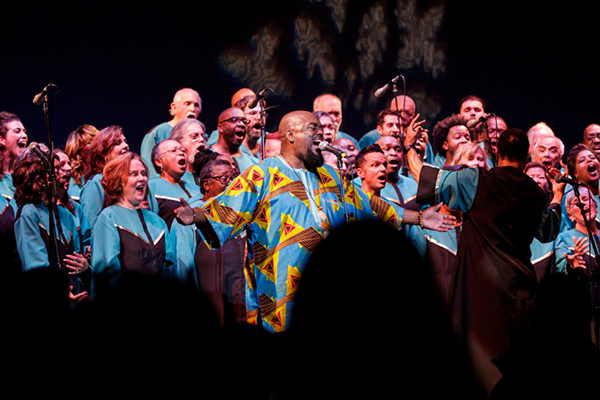
Better Together
In This Land, Downes is joined by this all-star cast of collaborators for a selection of classical and popular music exploring the richness and complexity of the American experience as we approach the country’s 250th anniversary. According to Downes:
“In this production, we are aiming to represent American history, but you can’t represent American music without engaging as many facets of it as possible. There are so many distinct traditions—folk, classical, roots, etc.—that all feed into and inform each other. Most of this work is exploring crossroads where worlds come together and so, given this ambition, it is really important to present as comprehensive a picture of American music as we can reasonably do onstage. And, of course, we as musicians learn so much when we collaborate with others coming from different backgrounds, we all flow into each other’s creative space.”
Takács Quartet
Having just celebrated it 50th season, the renowned Takács Quartet continues to deepen its connections to timeless masterworks and enliven the string quartet repertoire through fresh artistic collaborations. The award-winning string ensemble is made up of Edward Dusinberre and Harumi Rhodes (violins), Richard O’Neill (viola), and András Fejér (cello).
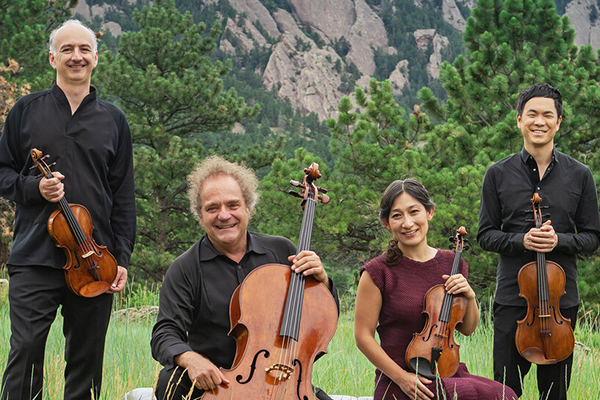
Clarice Assad
A powerful communicator renowned for her musical scope and versatility, Clarice Assad is one of the most popular Brazilian American concert-music composers of her generation. Celebrated also for her work as a pianist, vocalist, and educator, the Grammy–nominated musician is known for her evocative colors, rich textures, and diverse stylistic range.
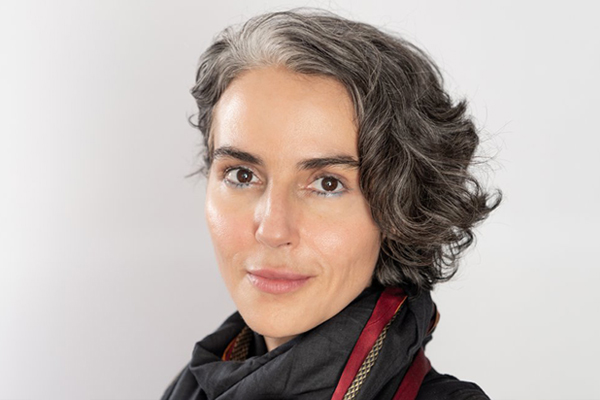
Better Together
The season’s second Takács visit features the Bay Area premiere of a new work co-commissioned by Cal Performances from polyglot composer and pianist Clarice Assad. Of getting to work with the composer, the Quartet shared:
“We fell in love with Clarice Assad’s music when we toured her quintet CLASH for the Takács and accordionist Julian Labro. Her diverse stylistic range and perceptive understanding of string quartet sonorities made us want to commission a new string quartet from her. Clarice’s music inspires interactive spirit and theatrical energy. We feel liberated by her limitless imagination and can’t wait to dive into her new string quartet for us. Debussy’s string quartet immediately came to mind to pair with Assad: the range of colors and textures in combination with its adventurous spirit reminds us of Assad. Similarly, Haydn’s Opus 74 No. 3 creates contrasting moods. The music is humorous, ethereal, and virtuosic. We are excited to spark a conversation between these unique musical voices.”


